
Since 1866 www.steeltimesint.com


Via Bonaldo Stringher, 4 33042 Buttrio (UD) Italy Phone +39 0432 518 111 www.digi-met.com www.dca.it Follow us on Linkedin Q3-PLATFORM AUTOMATION ARCHITECTURE AND INTEGRATED SYSTEMS Artificial Intelligence and Automation solutions to manage process, quality, production and energy Simplifying Metals Complexity

Cover: Kanthal
Editorial
Editor / Programme Director
Matthew Moggridge
+44 1737 855151
matthewmoggridge@quartzltd.com
Assistant Editor
Catherine Hill +44 1737 855021
catherinehill@quartzltd.com
Production Editor
Annie Baker
Advertisement
Carol Baird
Sales
International Sales Manager
Paul Rossage
+44 1737 855116
paulrossage@quartzltd.com
Sales Director
Ken Clark +44 1737 855117
kenclark@quartzltd.com
Corporate Managing Director
Tony Crinion
Published by:
Quartz Business Media Ltd
Quart House, 20 Clarendon Road
Redhill, Surry RH1 1QX, UK +44 1737 855000
www.steeltimesint.com
© Quartz Business Media, 2024


Steel Times International FUTURE STEEL FORUM 2024 1 Contents 3 Welcome by Matthew Moggridge, programme director. 4 Conference programme. 8 Exhibitor list and floor plan. 10 Speakers’ biographies. 28 Exhibitor profiles. 34 Fossil-free hydrogen flows at Hofors. 36 Moving towards climate neutrality – with the speed of a three-toed sloth. 42 Green steel supply 2025-2035: key trends and challenges 47 Production planning tools for liquid phase and hot rolling. 51 ESTEP initiatives towards green steel. 54 Unlocking data to create tangible value. 56 Electrification: the lynchpin to a sustainable future. 60 Forging a sustainable future: the role of virtual twins.
Production
SST SCHEDULER




High-Performance Production Planning Software BENEFITS SYNCHRONIZED SCHEDULING
SST
INCREASE PRIME QUALITY YIELD AND ENERGY EFFICIENCY
Lorem ipsum
REACT INSTANTANEOUSLY TO DEVIATIONS




www.smart-steel-technologies.com

Decarbonisation through Electrification





creation of synchronized casting
rolling
At the same time, the user retains full control of every slab
every parameter. Direct Charging Hot
Hot Storage Cold Storage / Slab Finishing
automates the
and
schedules.
and
Charging
Cold Charging
Furnace
Slab Caster
request@smart-steel-technologies.com Smart
Germany Smart
CHANGING
KPIs eurotherm.com a Watlow brand
for the DRI process
energy
to avoid load peaks and save costs
data
to optimize processes and
ROI ©2024 Watlow Electric Manufacturing Company. All rights reserved.
Steel Technologies GmbH I Berlin,
Steel Technologies Inc.I Cincinnati, USA SIMULATE AND ADAPT TO
OPERATIONAL
• Advanced electrical process gas heating e.g.
• Superior
management throug h PLM ©
• Digital solutions and secure
management
maximize

Welcome by Matthew Moggridge

They say Carlsberg is probably the best lager in the world – and who am I to argue? I was a real ale fanatic. However, I can say without fear of contradiction that the seventh outing of the Future Steel Forum is the best ever. Admittedly I’m biased – it was my idea – and I might be guilty of saying something similar every year since the Forum’s inception in June 2017. But let’s be honest, the 2024 event IS very different. There’s a strong green manufacturing theme this year, mainly because we’re in Sweden, home of the pioneers of hydrogen steelmaking: SSAB/HYBRIT and H2 Green Steel. Both are speaking and will be joined by other Swedish green steel heroes, such as OVAKO and Alleima. But it’s not just the Swedes, there are presentations from ArcelorMittal, Tata Steel Europe, Tata Steel India and JFE Steel from Japan. We have three important panel debates on Defining Green Steel, Direct Reduced Iron (DRI), and the Role of Artificial Intelligence in Steelmaking – all populated by leading experts in the field, offering advice and guidance to those seeking knowledge and inspiration. Welcome to Stockholm, welcome to the Stockholm Hilton and welcome to the Future Steel Forum 2024.
Steel Times International FUTURE STEEL FORUM 2024 3
Matthew Moggridge, programme director, Future Steel Forum


Day One: Tuesday
18th June
0800:
Welcome to the Future Steel Forum by Matthew Moggridge, programme director and editor of Steel Times International
Northern European Steelmakers Driving Transformational Change. Session chair: Jessica Pedroni Thorell, Investment Director, Kinnevik
0810:
Steel Shapes a Better Future – the Swedish Iron and Steel Industry’s journey towards carbon neutrality by Annika Roos, managing director of Jernkontoret (the Swedish Iron and Steel Producers Association).
0840:
H2 Green Steel – the Future of Green Steelmaking, by Maria Persson Gulda, chief technology officer, H2GS.
0910: Transformation to Fossil-Free Steel with HYBRIT technology, by Dr. Martin Pei, executive vice president and chief technology officer, SSAB AB
0940:
Decarbonization at Stahl-Holding-Saar – the total makeover of a major German steel company. By Jonathan Weber, member of the board of management (COO) of Dillinger and Saarstahl, member of the executive management of SHS –Stahl-Holding-Saar.
1010-1055: Tea & Coffee Break
1100: Green Steel Supply 2025-2035 by Stanislav Zinchenko, CEO, GMK Center.
1130:
Discussion Panel: How Do We Define Green Steel? Chaired by Rutger Gyllenram, CEO and founder, Kobolde & Partners
4 FUTURE STEEL FORUM 2024 Steel Times International CONFERENCE PROGRAMME
CONFERENCE PROGRAMME

Panelists
1. Thomas Hörnfeldt, vice president for sustainability, SSAB.
2. Fernand Didelon, consultant in steel decarbonization, Phoenix Technologies.
3. Nicklas Magnusson, decarbonization manager, Ovako Group.
4. Caroline Ashley, director, SteelWatch.
1215:
Electrification of Heating – A Path Towards the Decarbonization of Steelmaking by Dr. Dilip Chandrasekaran, senior vice president, director of business development, Kanthal.
1245:
Lunch & Networking Break
Northern European steelmakers driving transformational change (continued). Session chair: Klaus Peters, secretarygeneral, European Steel Technology Programme (ESTEP).
1400:
Sustainable Steel – Our Next Frontiers by Göran Nyström, senior advisor, Ovako.
1430:
An Overview of H2 Green Steel’s Direct Reduction Plant by Durgesh Gupta, Head of DRI, H2 Green Steel
1500:
Panel Discussion: Direct Reduced Iron – a Key Ingredient for Fossil-Free steelmaking Chaired by Rutger Gyllenram, CEO and founder, Kobolde & Partners
Panelists
1. Dr. Martin Pei, executive vice president and chief technology officer, SSAB AG.
2. Dr. Marco Lapasin, vice president, Danieli Centro Metallics.
3. Dr. Vincent Chevrier, General Manager, Technical Sales & Marketing, Midrex.
4. Dr. ir Tim Peeters, Department Manager, Ironmaking, Steelmaking and Casting, Tata Steel.
5. Durgesh Gupta, head of DRI, H2GS.
1545:
Material Technology that Makes a Difference for a more Sustainable Future by Håkan Sundström, head of governance and sustainability at Alleima. 1615:
Tea & Coffee Break
Northern European steelmakers driving transformational change (continued). Session chair: Bertrand Orsal, head of metals & minerals, Dassault Systèmes
1645:
Going Fossil-Free Together – a value chain perspective by Thomas Hörnfeldt, vice president for sustainability, SSAB.
1715:
FerroSilva – cost efficient and carbon negative DRI by Peter Samuelsson, founder and chairman of the board, FerroSilva AB
1745: Closing remarks
1800: Conference Closes
Steel Times International FUTURE STEEL FORUM 2024 5


Day Two: Wednesday 19th June
0800:
Welcome to the Future Steel Forum by Matthew Moggridge, programme director and editor of Steel Times International
Perspectives on Green Steelmaking. Session Chair: Rutger Gyllenram, founder and CEO, Kobolde & Partners.
0810:
Tata Steel’s Journey Towards Hydrogen-based and Circular Steelmaking by Dr. ir Tim Peeters, Department Manager, Ironmaking, Steelmaking and Casting, Tata Steel.
0840:
Low-Carbon Steel Production: is Europe setting the right conditions to remain a significant producer? By Stephane Tondo, general manager, ArcelorMittal
0910:
Europe’s Green Transition: what are the perspectives and opportunities for energy-intensive industries? By Roman Stiftner, Managing Director, Austrian Mining and Steel Association
0940:
Climate Change Resilience – water, by Dr. Rizwan Janjua, secretary to the worldsteel Technology Committee (TECO) Breakthrough Programme.
1010: Tea & Coffee Break
Perspectives on Green Steelmaking (continued). Session Chair: Holger Stamm, Partner, Oliver Wyman
1115:
The transformation of steel: blockers, builders and implications by Caroline Ashley, director, SteelWatch.
1145:
Is it time for a better scrap upgrade and mid-size DR plants to replace old BF plants? By Rutger Gyllenram, founder and CEO, Kobolde & Partners.
6 FUTURE STEEL FORUM 2024 Steel Times International CONFERENCE PROGRAMME

1215:
Fifty Shades of Green Steel – Cyclosteel’s green steel production solution by Dr. Tibor Szoke, chief technology officer, Cyclosteel
1245: Lunch and Networking Break
Digital Manufacturing and Automation. Session Chair: Ola Norén, head of metallurgy, ABB
1400:
Intelligent Steel Production through Digital Transformation by Takahiro Koshihari, General Manager, JFE Steel.
1430:
Improving Barrel Reclaimer Operation Efficiency Through Autonomous Operation, by Bikash Kumar Chatterjee, Head of Sinter Plant Operation and Vikas, Head Client Partner, Ironmaking, Tata Steel India.
1500:
Discussion Panel: Artificial Intelligence and steelmaking: a force for good?
Panel Chair: Shiva Sander Tavallaey, senior principal scientist, specializing in applied analytics at ABB.
Panelists
1. Kurt Herzog, head of industry 4.0, Primetals Technologies.
2. Dr. Falk-Florian Henrich, founder and CEO, Smart Steel Technologies.
3. Dr. Thiago Maier, executive vice president, Centre of Excellence, SMS-group.
4. Giovanni Bavestrelli, data science director, Tenova.
5. Jean-Paul Nauzin, technology and innovation director, Steel & Glass, Fives Group.
1545: Tea & Coffee Break
Digital Manufacturing and Automation (continued). Session Chair: Ola Norén, head of metallurgy, ABB
1615:
Real Time Carbon Footprint Tracking Through Enhanced MES to Drive Green Steel Production by Dipl. Betriebswirt Marc Schwarzer, consultant at PSI Metals GmbH
1645:
Journey to Intelligent Process Management: Case study of Fives and Arvedi AST by Alexander Gauche, Steel Digital Factory Director, Fives
1715:
Digitalization is a Key Enabler for Green Steel Production by Dr. Alexander Thekale, Technology Officer, Electrics and Automation, Primetals Technologies Germany GmbH.
1745:
A Co-Pilot for Steelmaking by Enrico Plazzogna, Executive Vice President (Sales), Danieli Automation
1815: Closing remarks
1830: Conference Closes.
CONFERENCE PROGRAMME Steel Times International FUTURE STEEL FORUM 2024 7

1. Smart Steel Technologies
2. CombiLift Ltd
3. Haver & Boeker Niagara
4 . Endress + Hauser
5. Polytec GmbH
6. Ametek Land Ltd
7. ABB
8. Shapeline
9. Fives S.A
10. SMS group
11. TVARIT
12. MaschinenFabrik Köppern GmbH

13. OMP
14. Dassault Systemès
15. Optris GmbH
16. Primetals Technologies
17. Venti Oelde GmbH
18. Kanthal
19. TotalEnergies
20. Pesmel
21. AMEPA GmbH
22. Tebulo Robotics
23. Paling Transporter Ltd
24. Resonac Graphite
25. Levidian
8 FUTURE STEEL FORUM 2024 Steel Times International EXHIBITOR LIST

Steel Times International FUTURE STEEL FORUM 2024 9 FLOOR PLAN www.futuresteelforum.com TO CONFERENCE ENTRANCE CATERING REGISTRATION 1 2 3 4 8 9 10 11 12 13 1415 1617 18 2021 22 23 24 25 19 6 5 7 TOILETS
SPEAKER PROFILES

MATTHEW MOGGRIDGE
EDITOR, STEEL TIMES INTERNATIONAL

Matthew Moggridge has been editor of Steel Times International since January 2014, having previously edited Aluminium International Today, both published by the UK-based Quartz Business Media. During his time on both titles he has travelled extensively around the world interviewing and writing about leading figures in the metals industry and covering international steel and aluminium conferences. In addition to working as a journalist in many different industrial sectors, he is also the creator and driving force behind the development of the Future Steel Forum, now in its seventh successful year. Matthew’s career as a business journalist has spanned many industrial sectors including food processing, foodservice, foreign direct investment, bulk handling and transportation and computers.
ANNIKA ROOS
MANAGING DIRECTOR OF JERNKONTORET,
THE SWEDISH IRON AND STEEL
PRODUCERS ASSOCIATION

Before joining Jernkontoret, Annika Roos headed the metal powder business unit at Sandvik, with the powder being used in processes such as additive manufacturing and metal injection molding. She has a long career and experience from many different leading positions at Sandvik, from the material technology business area (now called Alleima) as well as the metal cutting business area. Annika has an MSc in engineering physics from the Royal Institute of Technology, KTH, in Stockholm.
MARIA PERSSON GULDA
CHIEF TECHNOLOGY OFFICER, H2 GREEN STEEL

Maria Persson Gulda is chief technology officer at H2 Green Steel (H2GS). Maria has led the project from the start, from the idea of making green steel on a large scale, to where the company stands today. In her role as CTO, she is responsible for the plant design, including the production of green hydrogen, and the selection of the associated equipment and technology. Prior to joining H2GS, Maria was a partner at McKinsey and led digital transformations for the steel and paper industry. Maria holds a doctorate in applied physics from Harvard University. She wrote her dissertation on the topic of metallic structures and defects.
10 FUTURE STEEL FORUM 2024 Steel Times International

DR. MARTIN PEI
EXECUTIVE VICE PRESIDENT AND CHIEF TECHNOLOGY OFFICER, SSAB

Martin Pei has a BSc in ferrous metallurgy from Northeastern University, Shenyang, China and a doctorate in process metallurgy from the Royal Institute of Technology, Stockholm, Sweden. Martin started his working experience in 1994 at Danieli and since 2001 he has been with SSAB, at their primary operations in Oxelösund, Sweden. Since 2007, he has served as executive vice president and chief technology officer at SSAB. During 2010 and 2014, he also served as head of SSAB Business Area APAC.
Martin is the initiator of the HYBRIT initiative, a co-operation between SSAB, LKAB and Vattenfall, and served as the first-term chairman of the board for Hybrit Development AB. He is currently chairman of the board for SWERIM—the Swedish Research Institute of Mining, Metallurgy and Metals Research. Martin is a member of the Royal Swedish Academy for Engineering Sciences.
STANISLAV ZINCHENKO
CEO OF GMK CENTER

Stanislav Zinchenko is the CEO of GMK Center, chair of the Committee for Environment and Sustainable Development of the European Business Association, and president of the Council of Supply Chain Management Professionals’ Ukraine Roundtable. For the last five years, Stanislav has provided consulting services for Ukrainian iron and steel companies, specializing in sustainability issues, supply chains, CAPEX policy, and market analysis. He has 15-years of experience in consulting for manufacturing companies and expertise in operational management and supply chains as a team leader, consultant, and analyst in international projects in the field of entrepreneurship, operational efficiency and logistics infrastructure. Stanislav has an MSc in international economics from Kyiv National Economic University.
RUTGER GYLLENRAM
CEO AND FOUNDER, KOBOLDE & PARTNERS

Rutger Gyllenram is a Swedish metallurgist and entrepreneur. He has an MSc in process metallurgy and materials science and a licentiate degree (Dr-ing) in metal production technology from the Royal Institute of Technology, KTH, in Stockholm. He is the founder and CEO of Kobolde & Partners AB, working with raw material and process assessment, which is crucial for decarbonization in the steel industry.
Steel Times International FUTURE STEEL FORUM 2024 11 SPEAKER PROFILES

THOMAS HÖRNFELDT
VICE PRESIDENT,
SUSTAINABLE BUSINESS, SSAB
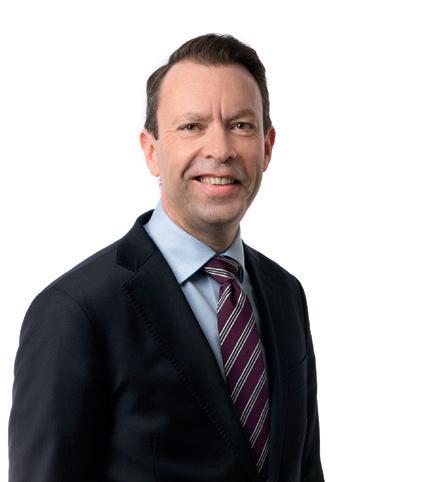
Thomas Hörnfeldt is vice president of sustainable business at SSAB. He has an MBA from Uppsala University and an MSc from KTH in Stockholm, as well as vast experience in general management and sales, market intelligence, and sustainability. He has been managing director of Ruukki Sverige, senior vice president of special steels and international sales at Ruukki Metals, vice president at Atlas Copco Dynapac, and vice president of corporate marketing and sales at steel provider Ovako. His career started at ABB, which he left as vice president in 2004, after almost 13 years of management positions in the metals industry.
FERNAND DIDELON
CONSULTANT IN STEEL DECARBONIZATION, PHOENIX TECHNOLOGIES

Fernand Didelon graduated from the Ecole des Mines de Nancy where he obtained a MSc in materials and chemical engineering. He started his career in 1991 as a blast furnace process engineer in ArcelorMittal Dunkerque and moved to ArcelorMittal’s Florange plant as head of BF process, then head of BF and utilities production, and later head of sinter plant. During his time at the Florange, he took part in the Ulcos (ultralow carbon steelmaking) project for implementing a demonstrator top gas recycling furnace at industrial scale. From 2011 to 2021, he occupied various positions, including head of blast furnace, head of steelshop and chief operation officer. In 2021 he joined the green steel team of SMSPaul Wurth in Luxembourg where he initiated the development of the EASyMelt concept and other decarbonization projects. Since March 2024 and within Phoenix Technologies SA, a consulting company, he has supported steel plants in improving their operational performances, aiding them in selecting the most efficient decarbonization options for sustainable steelmaking.
CAROLINE ASHLEY
EXECUTIVE DIRECTOR, STEELWATCH


Caroline Ashley is the executive director of SteelWatch, leading a small and growing international team driven by huge ambition: to decarbonize and transform the steel industry for a fair and thriving zero-emissions world. She is an experienced leader, systems-thinker, and change-maker. A socio-economist by background, her career has spanned work in non-profits, policy research, policy making, business innovation, impact investment, consultancy, and community development, in Africa, Asia, Europe and the Americas. Her early career in international development focused on equity and sustainability within market systems. Prior to founding SteelWatch, Caroline was economic justice strategic lead at Oxfam GB, challenging powerful players around the world to stretch for greater socio-economic transformation and climate resilience, and global programmes director at Forum for the Future, driving shifts from incremental change to system transformation in energy, food and the role of business in society.
12 FUTURE STEEL FORUM 2024 Steel Times International SPEAKER PROFILES

NICKLAS MAGNUSSON DECARBONIZATION MANAGER, OVAKO GROUP
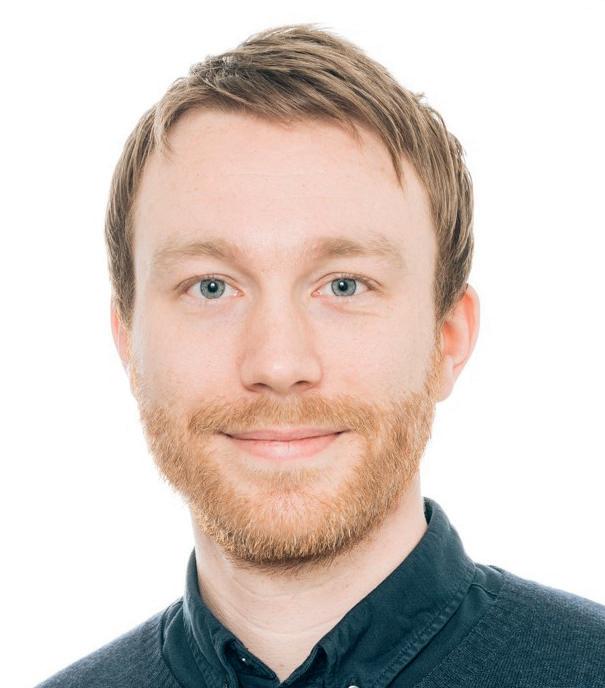
Nicklas Magnusson is decarbonization manager at Ovako, a leading European manufacturer of engineering steel. Nicklas worked within the construction industry for nearly 10 years, holding various positions within the field of sustainable business development, before joining Ovako in 2023. He holds an engineering degree in design and product realisation and a MSc in sustainable technology.
DR. DILIP CHANDRASEKARAN
SENIOR VICE PRESIDENT, DIRECTOR OF BUSINESS DEVELOPMENT, STEEL, KANTHAL
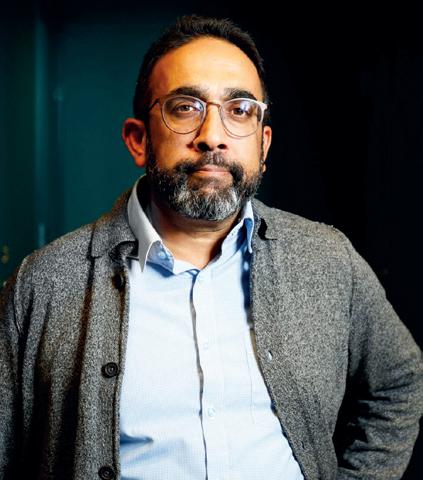
With more than 25 years of experience in various R&D-roles, 10 years as head of R&D, and 20 years with heating technology company Kanthal, Dilip Chandrasekaran is a highly knowledgeable expert in the field of resistance materials and industrial heating solutions. He is passionate about materials science, innovation, and product development – especially Kanthal’s solutions as part of the electrification of industries.
HOLGER STAMM
PARTNER, ENERGY AND NATURAL RESOURCES AND OPERATIONS,
OLIVER WYMAN

Holger Stamm is a partner in Oliver Wyman’s global energy and natural resources practice. For more than 20 years, he has assisted global clients in the steel and chemical industries with their transformation. His consulting focus ranges from strategy development to operational transformation and performance improvement programmes. Holger has extensive expertise in business and governance model optimization, value-based and sustainable procurement, as well as on topics such as green steel and ESG transformation issues. His goal is to support customers in challenging transformations and to manage the path to ‘green steel’ and thus make an active contribution to the decarbonization of society. He studied physics at the Rheinisch-Westfälische Hochschule Aachen and has worked both in the process industry and in consulting.
Steel Times International FUTURE STEEL FORUM 2024 13 SPEAKER PROFILES

GÖRAN NYSTRÖM
SENIOR ADVISOR, OVAKO AND FERROSILVA
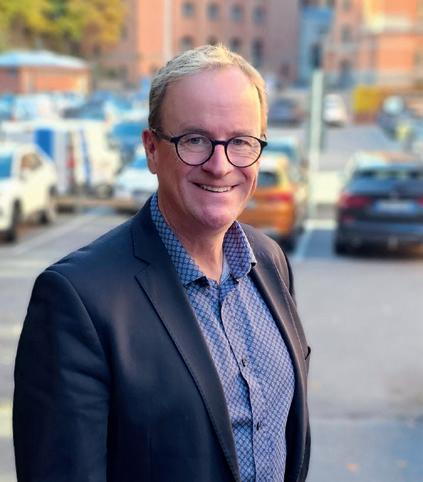
Göran Nyström previously served as the executive vice president of marketing and technology at Ovako, now working part-time as a senior advisor. Göran is also a partner of FerroSilva AB, a start-up for producing fossil-free sponge iron energy efficiently. He worked with Sandvik for 24 years in group vice president positions, and holds a MSc in materials physics.
DURGESH GUPTA
SENIOR VICE PRESIDENT, HEAD OF GLOBAL IRON MAKING TECHNOLOGY, H2 GREEN STEEL

Durgesh Gupta has 26 years of experience heading process, operations, planning, and project management of gas-based direct reduction plants worldwide. From 1997-2003, he was assistant manager (DR process) for Ispat Industries, then moved to Qatar Steel Company to serve as head of process and operations from 2003-2021. Durgesh joined H2 Green Steel in 2021 in his current role.
DR. MARCO LAPASIN
VICE PRESIDENT, DANIELI CENTRO METALLICS

Marco Lapasin has worked with Danieli since 2009. He worked as project director for EPC contracts for direct reduction plant and iron ore beneficiation, as well as other projects for steel manufacturing plants. After an assignment where he was responsible for the execution of construction contracts, he led the new business unit of Danieli Green Metal with the task of developing new technologies for sustainable steel production. He is now responsible for direct reduction and iron ore with a focus on the process, as well as the commercial side. His previous experience was with engineering companies, working in the fields of chemicals, oil, and gas. He earned a MSc in chemical engineering and started his working career as a process engineer. Danieli Centro Metallics is the business unit of Danieli for direct reduction plants, focused on Energiron technology, and the upstream processing of iron ore.

14 FUTURE STEEL FORUM 2024 Steel Times International SPEAKER PROFILES

DR. VINCENT CHEVRIER,
GENERAL MANAGER, TECHNICAL SALES & MARKETING, MIDREX

Vincent Chevrier is general manager – technical sales and marketing for Midrex Technologies Inc. His role consists in studying of long-term market trends and evolution, including the transition to fossil-free steelmaking.He earned a BSc in chemical engineering at the Université de Technologie de Compiègne, an MSc in mechanical engineering at Virginia Tech (USA) and a PhD in materials science and engineering at Carnegie Mellon University. Vincent began his career in the steel industry at IRSID in 1992. He then worked in the melt-shop and scrap yard for J&L Specialty Steel. Subsequently, Vincent held management positions at Keywell LLC, prior to joining Midrex in 2011. Vincent joined Form Energy in 2021 to develop and scale the iron anode of a novel long duration storage battery. He re-joined Midrex in April 2023.
DR. IR TIM PEETERS
R&D DEPARTMENT MANAGER, IRONMAKING, STEELMAKING, AND CASTING, TATA STEEL

Tim Peeters obtained a PhD in applied physics at TU Delft, the Netherlands, in 1995. He joined Tata Steel in 1999, and has since then fulfilled several roles in R&D, currently as department manager and programme manager for ironmaking, steelmaking, and casting. Decarbonization technology is a major part of his portfolio.
HÅKAN SUNDSTRÖM
HEAD OF GOVERNANCE AND SUSTAINABILITY,
ALLEIMA

With a background in sustainable practices and managing governance frameworks, Håkan Sundström has been leading various initiatives aimed at enhancing sustainability and environmental health and safety (EHS) within organizations. Prior to his current position, Håkan spent several years at Sandvik Materials Technology (now Alleima), where he held various leading positions such as the head of governance and sustainability and head of quality and standardization. He has also held key leadership roles within Sandvik Mining such as vice president quality, and quality director.
Steel Times International FUTURE STEEL FORUM 2024 15
SPEAKER PROFILES
SPEAKER PROFILES


BERTRAND ORSAL
STEEL EXPERT, DASSAULT SYSTÈMES

Bertrand is Dassault Systèmes’ steel expert. For 12 years he developed production processes for ArcelorMittal, of which some were patented and published. Then, after two years managing new works on a Seveso chemical site, he returned to the steel industry when he joined the Fives group in 2019. As a metallurgy advisor for customers, he developed an automatic operations management solution (MES) for flat carbon steel continuous galvanizing lines. He joined Dassault Systèmes in 2021 as an industry value expert on metals topics.
PETER SAMUELSSON
FOUNDER AND CHAIRMAN OF THE BOARD, FERROSILVA AB

Samuelsson has a PhD in metallurgical process science, and is docent in production technology – steel and metals industry – at the Royal Institute of Technology, Stockholm, Sweden. He has some 30 years of experience from both Swedish and international steel and engineering industry and has been chief technology officer and vice president of Sandvik Materials Technology. He previously held the position of senior vice president of research and development at Outokumpu, as well as various business, production, and logistics management positions.
STÉPHANE TONDO
GENERAL MANAGER, ARCELORMITTAL

Stéphane Tondo is currently head of climate change and governmental affairs at ArcelorMittal, and in that function, he contributes to the decarbonization roadmap of European entities and its financing. Stéphane joined Sollac, a former company of ArcelorMittal in the automotive sales division in 1998 where he held several positions, from market development engineer, through to key accounts manager, and finally heading the automotive sales area. Since 2013, he has been chief marketing officer in charge of packaging, oil and gas, and electrical steel segments within ArcelorMittal Europe Flat Products. Additionally, in March 2020, he took the role of chief executive officer of ArcelorMittal Avelino and Canossa in Italy. Stéphane holds a degree as a sales engineer from the ESIDEC business school in Metz, France.
16 FUTURE STEEL FORUM 2024 Steel Times International

DR. ROMAN STIFTNER
MANAGING DIRECTOR, AUSTRIAN
NON-FERROUS METALS FEDERATION AND THE AUSTRIAN MINING & STEEL ASSOCIATION
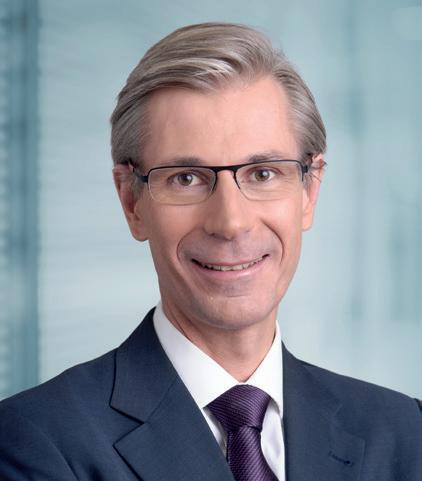
Roman Stiftner, CSE, is managing director of the Austrian Non-Ferrous Metals Federation and the Austrian Mining and Steel Association, as well as director-general of EUMICON. He is president of the Austrian Logistic Association (BVL), president of the European Shippers’ Council (ESC), vice president of Euromines and the European Logistics Association (ELA), and a member of the executive committee of European Aluminium and Eurometaux. Roman was CEO of the logistics automation company Dematic GmbH and senior vice president of Siemens AG Austria. He represented transport, infrastructure, environmental and energy affairs as a member of the Vienna State Parliament from 2005 to 2015. Roman studied at the Technical University Vienna and at the Vienna University of Economics and Business and graduated in 1994. He holds an academic doctorate degree from the Technical University Vienna. Since 2018 he has been a Certified Supervisory Expert (CSE) and is a lecturer at the University of Applied Science in Vienna.
DR. RIZWAN JANJUA
HEAD OF TECHNOLOGY, WORLD STEEL ASSOCIATION

Rizwan Janjua holds a PhD in material sciences and is head of technology at the World Steel Association. He is secretary to the worldsteel Technology Committee (TECO), CO2 Breakthrough Programme and leads the ‘StepUp’ programme which is aimed at improvements in mill operations to efficiency levels commensurate with the steel industry’s top performers for emissions and energy intensity using existing proven installed technology and best practices. He led the ‘Premature Wear of Copper Staves in Blast Furnaces’ project and has represented the steel industry in technical discussions on energy and climate change at IEA, IRENA and OECD.
DR. KLAUS PETERS
SECRETARY-GENERAL, EUROPEAN
STEEL TECHNOLOGY PLATFORM (ESTEP)

Klaus Peters gained a PhD in engineering in 1993 and gained a state doctorate in 1998 (RWTH Aachen), starting his industrial career with thyssenkrupp Steel Europe (tkSE). His senior experiences include production, sales, quality, and R&D both on a national and international level. From 2011, Klaus joined several working groups and committees of the European Steel Technology Platform (ESTEP) and was in charge of international research projects and European funding of tkSE. He became secretary general of ESTEP in 2015. He is a member of the Steel Advisory Group (SAG) of the Research Fund for Coal and Steel (RFCS) and board member of the public-private partnership Processes4Planet. He is the executive director of the Horizon Europe Clean Steel Partnership. In 2021, ESTEP was again appointed as member of the High-Level Group on Energy Intensive Industries.
Steel Times International FUTURE STEEL FORUM 2024 17
PROFILES
SPEAKER




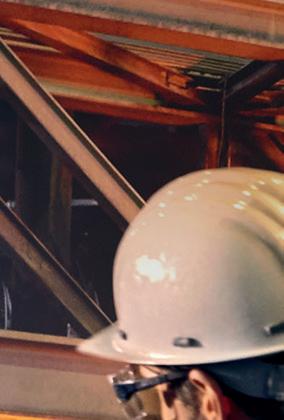
We understand how it is important to efficiently extract and process precious metals and minerals.
PROCESS + PROTECT
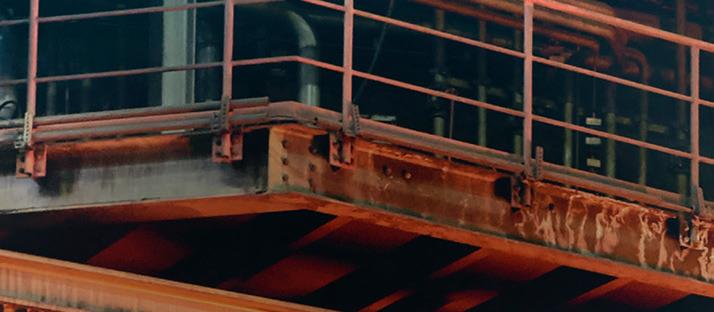












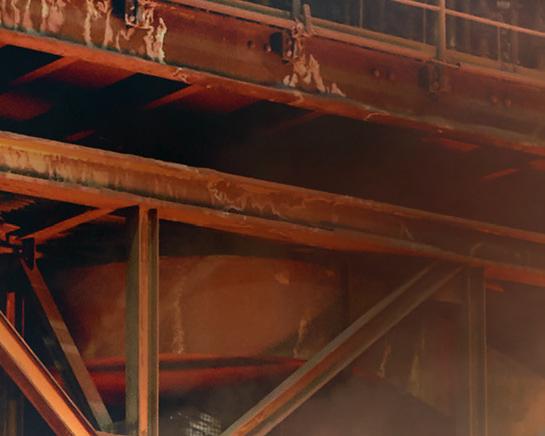
You save valuable resources while keeping your employees and the environment safe.
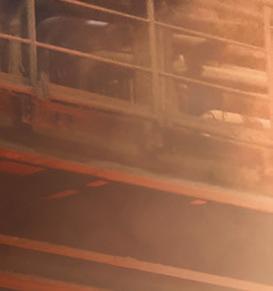



Improve your processes with our comprehensive portfolio of measuring instruments, solutions and services:






Liquiline CM44 and CPS11E: Versatile transmitter and Memosens pH sensors ensure reliable measurement and safe calibration in the lab.


FieldPort SWA50: Intelligent Bluetooth or WirelessHART adapter for the easy connection of all HART field devices to the Netilion Cloud via Edge Devices.


Cerabar PMC71B: Absolute and gauge pressure transmitter combining measurement accuracy with IIoT functionalities.
Do you want to learn more?
www.de.endress.com/primaries-metal

TIBOR SZOKE
CHIEF TECHNOLOGY OFFICER, CYCLOSTEEL

Tibor Szoke graduated as a metallurgical engineer in 1996 and has an absolutory PhD on the economics of metallurgical regions. He has been head of engineering at CEMI consulting company for 15 years and is currently chief technology officer of Cyclosteel and focused on the total green transformation of technology.
HEAD OF BUSINESS UNIT, METALLURGY, ABB
TAKAHIRO KOSHIHARI
GENERAL MANAGER, JFE STEEL

Ola Norén is the head of the metallurgy business unit at ABB, leading a global unit committed to helping the steel and aluminium industry to increase quality and productivity by using electromagnetic stirring technology. Throughout his career, he has held a variety of roles in sales, business development and management. He holds an MBA in finance management from Stockholm School of Economics and a MSc in industrial engineering and management from Luleå Technical University.

Takahiro Koshihara worked at JFE Steel’s Steel Research Laboratory from 1997 to 2024, where he mainly worked on the research and development of temperature measurement and surface inspection equipment using cameras and magnetism in steel mills. Currently, he is involved in the development of data science technology in the cyber physical systems research and development department. He graduated from the University of Tokyo and holds a MSc in engineering.
OLA NORÉN BIKASH KUMAR CHATTERJEE
HEAD OF OPERATION, SINTER PLANT, TATA STEEL

Bikash Kumar Chatterjee is a metallurgical engineer from NIT Durgapur, with 18 years of experience in iron ore sintering and pelletization, operation, design, and engineering. Bikash specializes in the sintering process, controlling stack emissions, pelletizing process, drying and grinding process, and has a wide understanding of plant machinery. He has worked with Tata Steel Limited since 2010 as head of operation, sinter plant.
Steel Times International FUTURE STEEL FORUM 2024 19
PROFILES
SPEAKER















Integrated Lifecycle Partnership















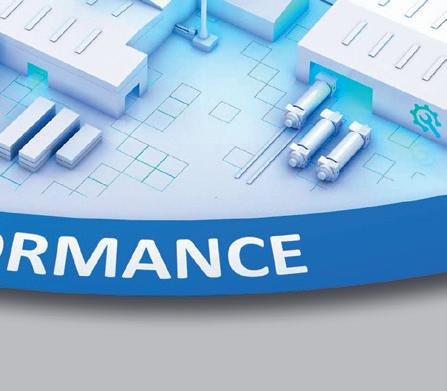

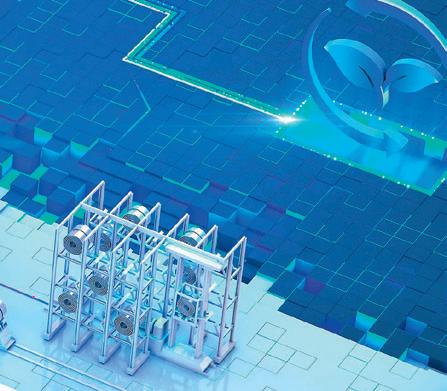







To be the leading partner for our customers in this transformation, SMS group bundles all competencies from electrics/automation, digitalization, and technical service. Our goal is to maintain and expand the performance of our customers' plants throughout their entire lifecycle. Together with our customers, we develop integrated solutions speci cally geared to the customer's use case. In doing so, we focus on crucial KPIs such as plant availability, product quality, productivity, or delivery reliability but also on increasingly relevant topics such as sustainability and safety.

SHIVA SANDER TAVALLAEY
AI LEAD, ABB SWEDEN
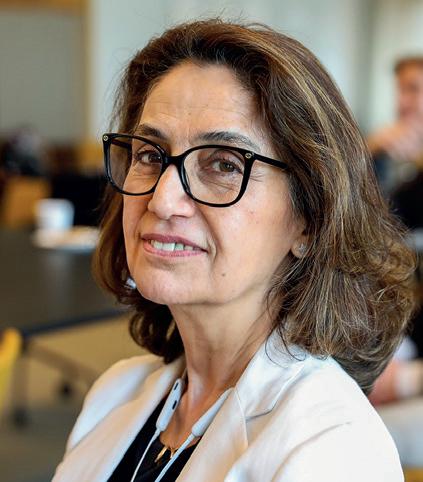
Shiva Sander Tavallaey is senior principal scientist specializing in applied analytics at ABB Corporate Research, where she also serves as the AI lead for ABB Sweden. Shiva holds a PhD in sound and vibration from the Royal Institute of Technology (KTH) and an MSc in mechanical engineering from Chalmers (CTH). Since 2015, Shiva has been serving as an adjunct professor at KTH, demonstrating her commitment to bridging academia and industry. Over her 30-year tenure at KTH, VOLVO CARS, and ABB, she has amassed a diverse range of experiences, from managerial to scientific roles, within national and international contexts.
KURT HERZOG
HEAD OF INDUSTRY 4.0, PRIMETALS TECHNOLOGIES

Kurt Herzog completed his MSc in industrial automation at the Technical University of Vienna and his MBA at the Linz Management Academy. In 1997, Kurt began working for VAI, a predecessor company of Primetals Technologies, in the area of process automation, and held several management functions in electronics and automation as well as in engineering. Since 2016, he has been responsible for the Industry 4.0 portfolio of Primetals Technologies.
DR.
FALK-FLORIAN HENRICH
FOUNDER AND CEO, SMART STEEL TECHNOLOGIES
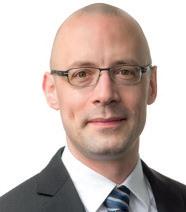
Falk-Florian Henrich is the founder and CEO of Smart Steel Technologies. The company offers AI-based software products to optimize steel production. Prior to founding Smart Steel Technologies, Falk built the high-tech company CeleraOne (2011-2018), and established it as the market leader in the paid content sector and then sold it to Axel Springer SE. Falk holds a PhD in mathematics and contributed substantial research to the theory of loop spaces of Riemannian manifolds and artificial intelligence.
Steel Times International FUTURE STEEL FORUM 2024 21 SPEAKER PROFILES


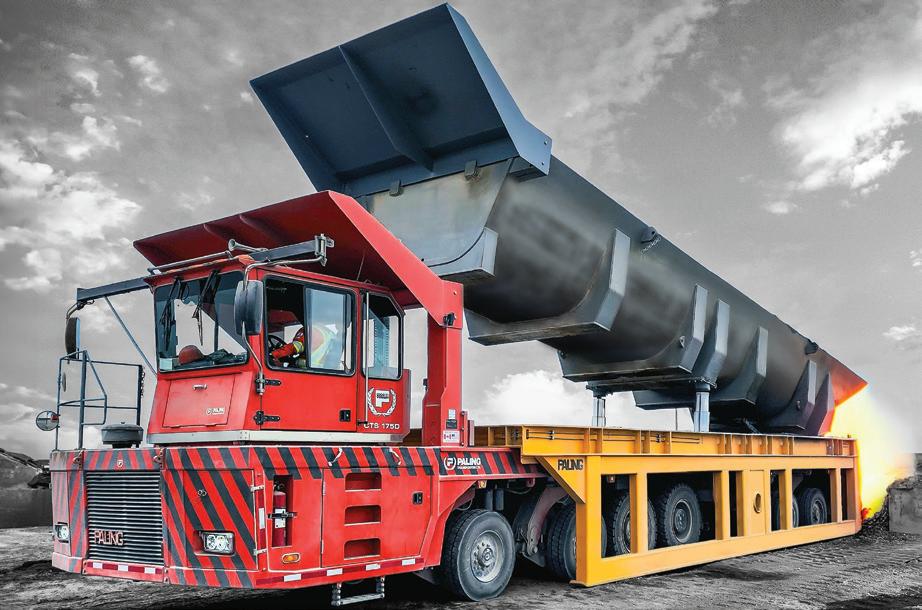



DR. THIAGO TURCHETTI MAIA
EXECUTIVE VICE PRESIDENT FOR SMS DIGITAL’S CENTRE OF EXCELLENCE

Thiago Turchetti Maia is the executive vice president for SMS digital’s Center of Excellence. He has over 20 years of experience in leading technology companies focused on industrial digitalization and founded Vetta and Viridis, two companies later incorporated by the SMS group. He has led software industry associations and served on different supervisory boards. Thiago holds a PhD and an MSc in electrical engineering, a BSc in computer science, and an MBA in finance.
GIOVANNI BAVESTRELLI
DATA SCIENCE DIRECTOR, TENOVA

Giovanni Bavestrelli graduated from the Politecnico di Milano, Italy, with a MSc in software engineering, after attending high school in Johannesburg, South Africa, for five years. He joined Pomini Tenova in 1994, working on roll grinder automation, developing and commissioning software systems for running roll shops in steel plants. In the year 2000 he joined Unisys Corporation, leading the development team for the Hermes editorial system. He went back to Pomini Tenova in 2004 as software engineering director and has since worked for Pomini Tenova, leading the software development team. In 2016 he contributed to Tenova’s Digital Transformation initiative and later joined the new Tenova Digital Team as director. He currently holds the position of data science director, focusing on artificial intelligence applications, and working closely with all of Tenova’s business units.
DIPL. BETRIEBSWIRT MARC SCHWARZER
CONSULTANT, PSI METALS GMBH

Marc Schwarzer, graduated with an MBA in business administration with a focus on informatics and logistics at the Julius-Maximilians University of Würzburg. During his time at university, he worked for two years on a part-time basis at Frankonia Jagd (part of Otto AG), and ran his own IT company for web solutions and custom-built consumer computers. In 2007, he joined PSI Metals as a junior consultant in the field of production management solutions for the metals industry, progressing to roles such as senior consultant, project manager and technical sales. His expertise in metals processes, supply chain planning, solution design and project management is highly sought after. After more than 15 years of experience in the fields of production management solutions encompassing supply chain management and planning, product design, quality management, production execution, logistics and integration with external systems, he has become a recognized expert in these areas.
Steel Times International FUTURE STEEL FORUM 2024 23 SPEAKER PROFILES
SPEAKER PROFILES

ALEXANDRE GAUCHE
STEEL DIGITAL FACTORY DIRECTOR, FIVES GROUP

Alexandre Gauche has been working at Fives since 2017, starting as a digital and innovation director in the energy division, then becoming a service and digital director in the steel and glass division. He has a MSc in engineering, science, and technology from École Polytechnique, France and a MSc in science and executive engineering from École Nationale Supérieure des Mines de Paris, France.
ALEXANDER THEKALE
TECHNOLOGY OFFICER, ELECTRICS, AND AUTOMATION, PRIMETALS TECHNOLOGIES

Alexander Thekale is the technology officer, electrics and automation, at Primetals Technologies. He previously held the position of innovation manager, electrics and automation, and head of digital solutions for downstream technology at Primetals. He holds a PhD in mathematics, and a diploma in applied mathematics, both from the University of Erlangen-Nuremberg.
ENRICO PLAZZOGNA
EXECUTIVE VICE PRESIDENT, SALES, DANIELI AUTOMATION

Born in Udine and living there today, Enrico Plazzogna graduated in electronic engineering, specialising in industrial controls at Padova University, winning a scholarship from Consorzio Padova Ricerche for a graduation thesis focused on robotic applications. He joined Danieli as a proposal engineer in 1994 and then became area manager for Europe, then for the Middle East and for Eastern Europe and Russia. He was then appointed executive manager (sales) for minimills and turnkey plants. Today he is executive vice president of sales, and a member of the board of Danieli Automation.
24 FUTURE STEEL FORUM 2024 Steel Times International

JESSICA PEDRONI THORELL
INVESTMENT DIRECTOR, KINNEVIK

Jessica Pedroni Thorell co-leads the climate investment theme at Kinnevik, a long-term permanent capital investor. Kinnevik supports visionary founders that are building companies for a more sustainable future. She most recently led the investment in H2 Green Steel building a first-of-akind decarbonized steel plant in Northern Sweden.
JEAN-PAUL NAUZIN
TECHNOLOGY AND INNOVATION DIRECTOR, STEEL AND GLASS, FIVES

Jean-Paul Nauzin started his career as a metallic material expert at ArcelorMittal France in 1996, where he worked for five years, before becoming the metallic material expert at PSA Peugeot Citroën (France). He held this position for over a decade. Jean-Paul obtained a MSc degree in materials science and forming from Sofia Antipolis, France, as well as an engineering degree in materials science and processing, undertaken at Mines de Nancy, France.
VIKAS
HEAD CLIENT PARTNER, IRON MAKING, TATA STEEL

Vikas is an electrical and electronics engineer from BIT Sindri, with an MBA from IMT Gaziabad. He has 18 years of experience in the IT sector of SAP and has worked for Tata Steel since 2005 as a head client partner in ironmaking, driving digital transformation.
Steel Times International FUTURE STEEL FORUM 2024 25
SPEAKER PROFILES

JONATHAN WEBER
MEMBER OF THE BOARD OF MANAGEMENT (COO) OF DILLINGER AND SAARSTAHL, MEMBER OF THE EXECUTIVE MANAGEMENT OF SHS –
STAHL-HOLDING-SAAR
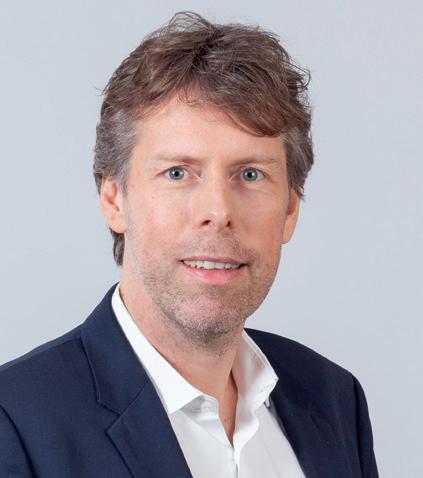
Jonathan Weber is member of the board of management (COO) of Dillinger and Saarstahl, and member of the executive management of SHS –Stahl-Holding-Saar, roles he has held since 2021. He has an MBA from the University of Mannheim. Prior to his current position, he spent almost a decade at thyssenkrupp, holding roles such as chief financial officer at thyssenkrupp Electrical Steel, head of strategy, markets, and development at thyssenkrupp Industrial Solutions, and manager of corporate development at thyssenkrupp AG. From 2007 to 2012, he worked at Salzgitter AG as deputy head of strategy.
26 FUTURE STEEL FORUM 2024 Steel Times International
SPEAKER PROFILES








Eyeron® fundamentally transformed our company’s work philosophy, enabling proactive quality control and production issue prevention.” Transform your process with Eyeron® Arvedi AST “ Eyeron® at Arvedi AST reduced qualification time decreased standby between processes automatically qualified coils >80% >40% >95% 25% claim reduction REAL RESULTS CONTACT steel@fivesgroup.com www.fivesgroup.com/steel

ABB Metals

Stand 7
Website: www.new.abb.com/metals
Email: se-metals_mailbox@abb.com
Phone: +44 1246 417691.
ABB is a trusted partner and leading supplier to the metals industry, delivering a broad portfolio of integrated electrification, automation, metallurgical and digital solutions. Its extensive global footprint serves the complete steel, aluminium, and other metals value chain. Drawing on over 100 years of experience, ABB collaborates with metals producers, original equipment manufacturers (OEMs) and other suppliers to develop process-specific and customized solutions that optimize production, improve sustainability, quality, and safety – while driving the transition to autonomous plants and a more circular economy.
AMEPA

Stand 21
Website: www.amepa.de
Email: info@amepa.de
Phone: +49 2405 40808-0
As technical contact for electromagnetic and thermographic slag detection, non-contact online roughness measurement and oil layer control we are performing in quality and engineering - Made in Germany.
AMEPA GmbH has been developing and implementing innovative, metrological system solutions in close cooperation with the steel, aluminum and automotive industries for 40 years.
Our systems ensure the highest quality standards along the entire process chain, starting with the production of high-purity functional steels through to the forming tribology for the rolling and pressing processes in automotive manufacturing.
In 34 countries, the more than 440 installations have made AMEPA systems a worldwide standard. Subsidiaries in the USA and China as well as a global sales and service network guarantee our customers comprehensive support.
AMETEK Land
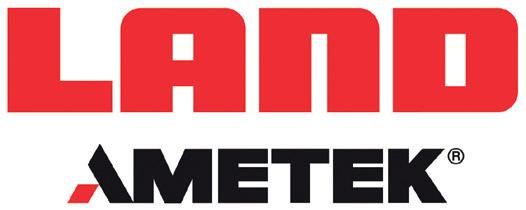
Stand 6
Website: www.ametek-land.com
Email: land.enquiry@ametek.com
AMETEK Land is a world-leading manufacturer of instrumentation and analysers for non-contact industrial infrared temperature measurements, combustion efficiency and environmental pollutant emissions. With our esteemed line-up of cutting-edge technologies, we have gained global recognition as the preferred supplier of highly accurate measurement solutions tailored to meet the unique needs of every customer.
Combilift

Stand 2
Website: www.combilift.com
Email: info@combilift.com
Phone: +353 47 80500
Combilift is the largest global manufacturer of multi-directional forklifts and an acknowledged leader in long-load handling solutions. Innovation, flexibility and service is the ethos on which Combilift’s success is built and has seen it become the world’s fastest-growing forklift manufacturer, exporting to more than 85 countries and with more than 85,000 trucks in use worldwide. No other manufacturer in the world can deliver the same level of customisation and adaptability or cater so effectively to the diverse needs of every individual customer, whether their enterprise is large or small.
28 FUTURE STEEL FORUM 2024 Steel Times International EXHIBITOR PROFILES

Dassault Systemès

Stand 14
Website: www.3ds.com
Email: ENORTH.Events@3ds.com
Phone: +46 76 721 85 06
Dassault Systemès began in 1981 with a small team of around 20 engineers, primarily supporting the aerospace industry with just one brand: CATIA. Today, its workforce has grown to more than 22,500 with a portfolio of 12 brands that serve almost every industry you can think of. Science is its DNA. Dassault Systemes accompanies players across the globe as they address the world’s biggest challenges using virtual universes. Whether it’s 3D design, digital mock-up (DMU), or product lifecycle management (PLM), it does it all – and is continuing to grow.
Endress + Hauser GmbH
Stand 4
Website: www.endress.com
Email: andrew.reese@endress.com
Phone: +49 7621 975 935
Endress+Hauser is a global leader in measurement instrumentation, services and solutions for industrial process engineering. We provide process solutions for flow, level, pressure, analytics, temperature, recording and digital communications, optimizing processes in terms of economic efficiency, safety & environmental impact. Our customers come from various industries, including chemical, food & beverage, life sciences, power and energy, mining, minerals and metals, oil and gas and water and wastewater.
Fives Group

Stand 9
Website: www.fivesgroup.com
Email: steel@fivesgroup.com
Fives, an industrial engineering group, is your solution provider for steel process expertise, new technologies and solutions. Fives partners with manufacturers from various markets to increase their productivity and quality, expand product portfolio and reduce emissions on the road to decarbonize the industry:
• Product, technology and market expertise
• Advanced steel grade & coating development consulting
• Ultra-low NOx reheating furnaces
• Cold rolling mills for electrical, stainless and carbon steels
• Strip processing lines for electrical, carbon and stainless steels
• Advanced digital process controls to increase profitability and improve uptime
• Intelligent quality management systems for entire plants.
Haver & Boecker Niagara

Stand 3
Website: www.haverniagara.com
Email: info@haverniagara.com
Phone: +49 (0) 251 9793 0
Haver & Boecker Niagara is a leader in screening and pelletizing. Its mission is to deliver the best of these technologies to customers in the mining, minerals, aggregates, cement, construction materials, fertilizers, salt and recycling industries.
With deep roots and years of experience in these industries, the company uses innovative and shared technologies to effectively meet the needs of customers around the world.
Steel Times International FUTURE STEEL FORUM 2024 29
EXHIBITOR PROFILES

Kanthal
Stand 18
Website: www.kanthal.com
Email: info@kanthal.com Phone: +46 220 210-00
Kanthal is a global organization serving a wide variety of applications. Focusing on heating alloys for industrial, appliance and thermocouple applications, as well as, the full range of metallic and ceramic elements, modules and heating services.
We can focus on specific technologies and capabilities to match individual customer needs. Our core technical expertise is in high temperature electrical heating solutions for industrial applications.
Maschinenfabrik Köppern GmbH & Co. KG

Stand 12
Website: www.koeppern-international.com
Email: info@koeppern.de Phone: +49 (2324) 207-0
Maschinenfabrik Köppern is specialized in the development and fabrication of roller presses as well as engineering services for complete roller press-containing plants. There is a wide range of applications for presses made by Köppern in the metallurgical industry. They are used for briquetting the fine fractions of caustic lime, coke/coal, ores, metallurgical residues, feed materials in reduction processes, cold application of direct reduced iron with binders or hot applications at approximately 700°C (HBI). High-pressure ore and minerals sizing technology has been a new field of application for roller presses for about 25 years.
OMP

Stand 13
Website: www.omp.com
Email: bgoffin@omp.com
Phone: +32 3 650 221
OMP helps companies facing complex planning challenges to excel, grow and thrive by offering the best digitized supply chain planning solution on the market.
Its Unison PlanningTM Solution has a unique approach. It handles all supply chain planning challenges in a unified way, synchronizing all planning stages, horizons, functions and roles. From source to deliver. From strategic to operational planning. From leadership teams to schedulers.
Hundreds of customers run OMP’s cloud-based solution to generate more value by making informed decisions. Valued as a thought leader by experts as Gartner, OMP invests one out of every three dollars earned into innovation.
Optris GmbH

Stand 15
Website: www.optris.com
Email: sales@oprtis.com
Phone: +49 30 500197-0
Optris was founded in 2003 and has since established itself as one of the leading innovative manufacturers of non-contact temperature measurement devices.
The product portfolio comprises stationary infrared thermometers and online infrared cameras as well as accompanying accessories and software for industrial applications and research and development.
“German engineering” - Thanks to an extensive know-how and innovative concepts, our experienced engineers and physicists continuously inspire new product developments and outstanding solutions.
“Made in Germany“ - We are developing and producing in Germany to ensure the highest standard in quality as a key component of our company policy.

30 FUTURE STEEL FORUM 2024 Steel Times International EXHIBITOR PROFILES

Paling Transporter Ltd.

Stand 23
Website: www.palingtransporter.com
Email: info@paling.com
Phone: +1 905 561 3444
Paling Transporter is an engineering and manufacturing company based in Hamilton, Ontario, home to Canada’s largest steel producer. Paling has been building 200+ ton capacity industrial lift transporters for the global steel industry for over 35 years. These high-capacity workhorses transport every element of material in steel production, from raw materials to finished goods. Independently owned and operated, Paling transporters are proudly built in North America.
Polytec GmbH

Stand 5
Website: www.polytec.com
Email: info@polytec.de
Phone: +49 (0) 7243 604-0

Pesmel Stand 20
Website: www.pesmel.com
Email: pesmel@pesmel.com
Phone: +358 20 7009 600.
Pesmel is a global supplier of highly automated material handling systems. The Material Flow How® concept is a unique combination of material flow simulation, in-mill logistics, packing and high-bay warehousing technology, and in-house software capabilities. The company has more than 40 years of experience in delivering solutions that improve material flows and logistics at steel mills.
Pesmel provides customers with new perspectives and helps to develop in-mill logistics operations. This offers great potential on the journey towards smooth and efficient production. By optimizing in-mill logistics, traditional storage areas can be turned into an automated distribution center that will serve production processes and streamline deliveries to customers.
Pesmel focuses on bringing customers benefits that materialize through improved space efficiency and material flows between processes and shipping, work safety, enhanced loading and shorter turnaround times, as well as quality and accuracy of deliveries. It is the Material Flow How® company.
For over 50 years Polytec has provided high-technology, optical measurement solutions to researchers and engineers. Its commitment is to provide the most precise and reliable optical instruments and sensors available for non-contact measurement of vibration, length, speed and surface topography. Polytec instruments help to solve pressing application challenges in R&D, engineering and manufacturing quality and process control and help customers to maintain the leading position in their field. The applications range from micro system technology to large- scale mechanical engineering for the automotive sector, aerospace and steel industry, medical technology, and biomedical sciences.
Primetals Technologies

Stand 16
Website: www.primetals.com
Email: contact@primetals.com
Primetals Technologies, headquartered in London, UK, is a worldwide leading engineering, plant-building, and lifecycle partner for the metals industry. The company offers a complete technology, product and service portfolio that includes integrated electrics, automation, and environmental solutions. This covers every step of the iron and steel production chain that extends from the raw materials to the finished product – in addition to the latest rolling solutions for the non-ferrous metals sector. As Primetals Technologies has been a provider of automation solutions of all levels to steel producers for decades, the digitalization of the metals industry has been one of the company’s main focus areas for a long time. Primetals Technologies is a group company of Mitsubishi Heavy Industries (MHI).
Steel Times International FUTURE STEEL FORUM 2024 31
EXHIBITOR PROFILES
EXHIBITOR PROFILES

Resonac

Stand 24
Website: www.graphite.resonac.com
Email: graphite_info@resonac.com
Phone: +1 843 599 1506
Resonac Graphite Business Unit specializes in the development and production of synthetic graphite and is a global leader in graphite electrodes for electric steelmaking. With production facilities strategically located worldwide, we offer a complete range of products and proudly deliver value-based technical services. RGBU is committed to sustainability – both environmentally and economically, and we are uniquely prepared to meet today’s evolving market needs. By partnering with AMI Automation, we aim to become supplier of choice through a focus on safety, sustainability, digital transformation, and by providing innovative solutions to achieve exceptional steelmaking performance. It’s time to rethink melting.
Shapeline AB

Stand 8
Website: www.shapeline.com
Email: mattias.wagman@shapeline.com
Phone: +46 73 666 7059
Shapeline AB is a Sweden-based supplier of optical flatness measurement systems for the steel and aluminium industries globally. The company was founded in 1999 and has since then supplied 190+ flatness measurement systems worldwide for:
• Real-Time process control
• Quality assurance/control
• Process Development
Smart

Steel Technologies GmbH Stand 1
Website: www.smart-steel-technologies.com
Email: request@smart-steel-technologies.com
Phone: +49 30 403673720
Smart Steel Technologies is a leading provider of software solutions for the steel industry, delivering intelligent systems to optimize the planning and production process. Our comprehensive software products elevate quality standards, optimize energy demand, and foster continuous improvement throughout the production and supply chain.
Powered by sophisticated mixed integer models, our high-performance planning software is trusted by leading steel manufacturers worldwide, operating seamlessly 24/7. Through comprehensive solutions and add-on models, we harmonize complex mechanisms, ensuring streamlined operations and enhanced productivity. In addition, we offer Level 2 systems for melt shop and casters, providing advanced control and monitoring capabilities to further enhance efficiency and quality.
Our dedicated team of experts, comprising excellent metallurgists, process specialists, ML engineers, and visionary software architects, is committed to guiding steel manufacturers from software integration to achieving optimization goals.
At Smart Steel Technologies, innovations drive us forward, pioneering efficiency and excellence in the steel industry.

SMS group Stand 10
Website: www.sms-group.com
Email: vivian.huttny@sms-group.com
Phone: +49 21613501570
The SMS group unites global players in plant and machinery construction for processing steel and NF metals, operating under the roof of SMS Holding GmbH. The family-owned company – now run by the fourth generation – stands out with its strong market position and corporate culture of responsibility, together with high-performance products and services tailored to individual customer requirements. The SMS group combines the flexibility of medium-sized company units with the vast resources of a global group. The SMS group is your partner for new plant and machinery as well as modernizations and upgrades.
32 FUTURE STEEL FORUM 2024 Steel Times International

Tebulo Industrial Automation

Stand 22
Website: www.tebulorobotics.com
Email: info@tebulorobotics.com
Phone: +31 72 20 05 500
Tebulo Robotics is a leading and innovative specialist in hightech robot integration. It works closely with major players in the steel, aluminium and other heavy industries.
With specific expertise in R&D, engineering, assembly and commissioning, the company builds and maintains highquality integrated robot applications. Taking responsibility and constantly improving is in Tebulo Robotic’s DNA.
TotalEnergies Lubrifiants
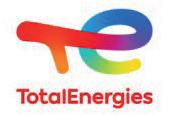
Stand 19
Website: www.lubricants.totalenergies.com
Email: fabio.silva@totalenergies.com
Phone: +33 (0) 6 20 36 76 23
TotalEnergies Lubrifiants is a leading global manufacturer and marketer of lubricants, with 42 production sites around the world and more than 5,800 employees in 160 countries. TotalEnergies’ Lubricants division offers innovative, highperformance and environmentally friendly products and services, developed by its R&D centers, which employ over 130 researchers.
TotalEnergies’ lubricants division is a key partner for the steel industry with a presence in more than 160 countries. With more than 40 years of experience, TotalEnergies has developed a comprehensive product range of rolling oils and special lubricants that meet the special requirements and needs of the steel industry, supporting the vital role of efficient production and operations.

Tvarit Stand 11
Website: www.tvarit.com
Email: vikas.goel@tvarit.com
Phone: (+49) 160 3359435
Tvarit GmbH is a Frankfurt-based Industrial AI company with a vision of sustainable and zero-waste manufacturing. With a proven track record of leading ROI-driven end-toend AI & Industry 4.0 transformations, Tvarit has achieved a 50% reduction in scrap and an 8% reduction in energy consumption for metal manufacturers. Maintaining a sharp focus on reducing scrap and energy consumption, Tvarit is reshaping the landscape of the steel industry through innovation. At the heart of the company’s success lies its ground-breaking ‘Hybrid AI’ technology that merges the intricacies of the steel domain with the prowess of deep learning.
Tvarit stands out with its streamlined approach to data science and machine learning, achieving implementation in both a fast and cost-effective manner, and while maintaining 100% accuracy in select cases. Tvarit offers a combination of reliable technology, customized solutions, and customerfocused consulting.
Ventilatorenfabrik Oelde GmbH
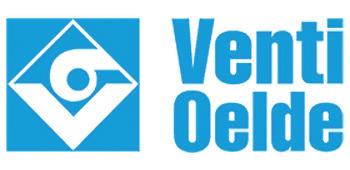
Stand 17
Website: www.venti-oelde.com
Email: info@venti-oelde.de
Phone: +49 2522 75-0
Venti Oelde plants and components are used for collecting, handling, and filtering air, vapours, gases, dust and airborne solids. Its manufacturing programme includes dust collection and process gas cleaning plants, exhaust air treatment plants, ventilating, heating and air-conditioning plants, recycling and waste treatment plants as well as plants for surface technology. Maintenance, servicing, inspection, repairs as well as plant upgrading, rationalisation and enlargement complete the available services. Specialists in a large number of outside offices and agents ensure expert support globally.
Steel Times International FUTURE STEEL FORUM 2024 33
PROFILES
EXHIBITOR
Fossil-free hydrogen flows at Hofors

Eliminating fossil fuels at all production stages is key to decarbonizing steel. This took a major step forward in September 2023, when Ovako, a member of the Nippon Steel Corporation Group, inaugurated the world´s first industrial-scale plant to produce fossil-free hydrogen for heating steel before rolling. By
Ovako’s Hofors mill in Sweden is now producing hydrogen from a new electrolyzer developed to reduce the use of fossil fuels and cut the carbon footprint by 20kt/yr. The 20-megawatt (MW) plant, one of the largest in Europe, can produce 3,880 cubic metres of fossil-free hydrogen per hour, as well as oxygen.
Bringing the electrolyzer online was an important step on the journey towards decarbonization for Hofors, a site that dates to the start of iron production in 1549. While the pace has certainly picked up in recent decades, we began the journey in 1930 with our first electric arc furnace (EAF). Since then, we closed our last blast furnace in 1977 and converted our steel heating furnaces to oxyfuel in 1995. More recently, we commenced electrification of our heat treatment furnaces in 2012 and published our first verified climate declarations in 2018. These steps culminated in Ovako
Göran Nyström*
achieving an 80% lower carbon footprint, in a full cradle-to-gate comparison, compared to the global average, but we work constantly to get even better.
The next steps in our decarbonization journey rely on electrification. Intense heat is required at three stages of the steelmaking process: melting, hot-forming, and heat treatment. Ovako’s melt shops and heat treatment furnaces had already been converted to fossil-free Nordic electricity.
The remaining step was to address the heating furnaces, operating at 1200°C. They are essential to bring steel to the correct temperature for hot-forming processes such as rolling or forging. Previously, this could only be achieved by burning fuel such as liquid petroleum gas (LPG). Therefore, we decided that the best way to achieve an immediate cut in emissions would be to convert Hofors’ furnaces to burning hydrogen since this only emits water.
*Senior advisor, OVAKO.
In effect, producing hydrogen by electrolysis of water is an indirect way to electrify the heating furnaces and tackle this area of CO2 emissions. This is where our new hydrogen plant comes in.
Trials provided the vital proof of concept
The hydrogen project commenced with a pilot scheme with Linde Gas AB. This saw the world’s first full-scale trial using hydrogen to heat steel before rolling in a production environment.
The trial at the mill in Hofors successfully confirmed that hydrogen can be used simply and flexibly, which would mean a very large reduction in the carbon footprint. Most importantly, it also showed the switch to hydrogen had no impact on the quality of the steel. So, given the right conditions, we knew we could introduce hydrogen heating for furnaces at our rolling mills and thereby
34 FUTURE STEEL FORUM 2024 Steel Times International FUTURE STEEL FORUM 2024
FORUM 2024


drastically reduce our already world-leading low carbon footprint from cradle to gate.
Drawing water from the local supply
The electrolyzer is located close to the furnaces at Hofors, where we draw water from the local supply and split it into hydrogen and oxygen. Shortly afterwards, we then burn these gases in the furnaces and re-form water. This approach requires storage of only up to 30 minutes as a buffer for fluctuations in production and demand. In effect, we regard the process as ‘borrowing’ water from the ecosystem.
Even though the plant has a small buffer storage tank, it has been designed to produce hydrogen on demand for when it is required by the furnaces. A smart control system has been developed for a smooth switch between hydrogen and propane (LPG) oxyfuels.
Delivering wider benefits
Ovako could not have realized this project successfully without the financial and technology support provided by its partners.
Sweden’s Energy Agency provided funding under its industrial decarbonization initiative. This included support from the EU’s Recovery and Resilience Facility (RRF), which is an element of the NextGeneration EU scheme that is contributing to a more environmentally friendly EU.
From a technology and project delivery perspective, Hitachi Energy and Nel Hydrogen have provided know-how to
deliver a plant optimized to fuel our furnaces and support the stability of the electric power grid.
Our other partners are Volvo Group and H2 Green Steel. They are important for the wider adoption of hydrogen. Volvo will use experience at Hofors to evaluate the potential use of hydrogen as a fuel for emission-free road transport. Similarly, H2 Green Steel will use our experience as a legacy steelmaker in deploying hydrogen technology to inform its greenfield approach to low-emission steelmaking.
There is also potential for the excess heat from the plant to be used for district heating.
The way ahead
Following the success at Hofors, we can use it as a ‘cut and paste’ plan that will enable us to use local hydrogen production in all Ovako units where steel is rolled by 2030 – provided there is good access to fossil-free electricity to power the electrolysis process.
Part of a broader environmental plan
In March 2019, Ovako became a subsidiary of Sanyo Special Steel and a member of Nippon Steel Corporation Group, a steel producer with more than 100,000 employees in more than 15 countries globally.
Environmental aspects have always been a fundamental part of our business and our goal is to achieve zero-carbon emission steel. Since January 2022, Ovako has supplied
products based solely on carbon-neutral steel production by counterbalancing the remaining carbon emissions through carbon offsets. Ovako differentiates itself in the market by using only steel scrap as input material instead of iron ore. Since steel can be recycled an infinite number of times without its properties deteriorating, we can manufacture it with a lower climate impact without compromising the quality of the product.
Climate smart products
Cutting carbon emissions in production is just part of the sustainability story. Because our high-performance steels are designed to be ‘climate smart’, this gives customers unique opportunities that provide better performance, lower production costs and improved climate profiles.
Ovako’s premium steel is one of the cleanest on the market. Inclusions and defects are minimized during the manufacturing process, resulting in a highly clean product with better fatigue strength than conventional offerings. This enables customers to develop advanced solutions for components that are lighter and stronger and have a longer service life. This means that Ovako helps customers to create better product solutions with a lower environmental impact.
For more information about Ovako’s sustainability philosophy https://www.ovako. com/en/newsevents/stories/products-thatprove-their-environmental-credentials/
Steel Times International FUTURE STEEL FORUM 2024 35
STEEL
FUTURE
Moving towards climate neutrality –with the speed of a three-toed sloth

*Rutger Gyllenram is a Swedish process metallurgist, CEO and founder of Kobolde & Partners AB and co-founder of FerroSilva AB. Kobolde works with raw material and process assessments for the mining, metals and steel industries and is active in ISO and CEN standardisation of carbon accounting and CCS as well as LCA methodology for steel and aluminium.
Neither Rutger Gyllenram nor Kobolde & Partners have customers or any other interests in the fossil or nuclear industries.
36 FUTURE STEEL FORUM 2024 Steel Times International FUTURE STEEL FORUM 2024
The European Union and the EU member states are spending immense sums on supporting the transformation of the iron and steel industry to become carbon neutral by 2050. Yet it feels that we are moving too slow, and at the same time voices are heard saying that we move too fast and need money also for other purposes in order to sustain social stability and a functioning democratic system in Europe. Is it time to rethink the decarbonization pathway in the EU? Is it better to now do what we can with existing technology at reasonable costs rather than waiting for the perfect solution?
By Rutger Gyllenram*

“ In my mind it is better to start making improvements in existing technology, although they may not result in total climate neutrality, rather than waiting for the perfect solution that we perhaps cannot sustain. ”
Living in South America, the three-toed sloth is a friendly herbivore that spends most of its life in the trees, trying not to be noticed so as to avoid predators. With a maximum ground speed of 250m per hour when in a hurry, I guess the sloth is not a formidable symbol for speed. Yet it is the animal I have chosen to symbolise the present state of decarbonization in the steel industry in this contemplation starting at the breakfast table just before Easter.
A headline slaps me in the face ‘Klimatomställningen riskerar att gå för fort’ which is Swedish for ‘Actions to reach climate neutrality risk going too fast’. Malte Lohan, the director-general of the European Industry organisation Orgalim is interviewed in the Swedish morning paper Svenska Dagbladet. The essence of the article is that ill-considered decisions create opposition that in the end may make the transformation to a low-emission society come to a halt. “What is the point of trying to show that Europe can become climate neutral if our social democracy breaks down in the process?”
I turn to my flow in Linkedin and read: ‘Green steel is possible and even affordable, but still unlikely’ in an article by Clyde Russell from Reuters giving an Asian perspective. The message is that a voluntary green steel premium is sustainable only in applications where steel represents a minor part of the product value like, for example, a car. For buildings, the steel intensity is higher, and with that – the price sensitivity. Furthermore, countries where urbanisation and construction of infrastructure consume a large part of the available capital for development are less inclined to pay a premium. The conclusion is that some sorts of carbon taxes are necessary, but may not be applicable everywhere.
I recall my visit to a hydrogen seminar given by VDEh Steel Academy in Dusseldorf early in March. I learned that hydrogen produced at the border with France is ‘questionable since the imported electricity comes from nuclear power plants’, and that the green steel definition developed by VDEh does not take CCS into account to decrease the reported emissions ‘since CCS is not allowed’ and that Germany, on the other hand, plans to import blue hydrogen from Norway, which is produced from natural gas using CCS. I admit that I may have misunderstood something in this, in every
FUTURE STEEL FORUM 2024 37
The troubled author Rutger Gyllenram (left) with a WWF three toed sloth (right) and a decarbonization calendar. Photo: Pelle Berglund, Znapshot.



“Most of the blast furnaces operating today are less than 30 years old and will probably be in operation well after 2050”
way excellent, event but it all seemed rather confusing. In Sweden, we are experiencing a growing resistance to closing functioning nuclear power plants and to using available electricity production capacity for ‘statesubsidized DRI production’. As an observer, I wish for more fact-checking and an open minded debate from both sides but can only note the anger and dissatisfaction.
Questions arise: Have decision makers overplayed their hands when it comes to redesigning the society to meet climate goals? Is it now time to reconsider the positions and instead redesign the suggested decarbonization paths? To make a stop to that, they must put three green holy cows on hold: ‘no CCS’, ‘no nuclear power’ and ‘no fossil fuels’ can any longer dictate the agenda. In Voltaire’s words, governments today are letting ‘perfect be the enemy of good’. In my mind it is better to start making improvements in existing technology although they may not result in total climate neutrality
rather than waiting for the perfect solution that we perhaps cannot sustain.
It seems that Germany is now looking again at using CCS and Sweden has given up the resistance and started a CCS programme. The last nuclear plant in Germany shut down in 2023 and closed plants can never be restarted. Sweden will hopefully continue operating functioning nuclear plants and the present Swedish government has new installations on the agenda. If and when they will materialise is written in the stars. That leaves us with the resistance to fossil fuels, especially coal, combined with a problematic love for hydrogen.
While most of the many steel decarbonization experts that have entered the world arena in recent years believe that hydrogen reduction will totally dominate the market in 2050, I must report a dissenting opinion. Do not get me wrong. When we have new technology and can produce an abundance of fossil-free energy at low cost,
we have every possibility to use electricity in different ways to produce iron including reduction with hydrogen from electrolysers. Until then we have to stick with the world we have. When I evaluate the financial conditions for some of the existing fantastic decarbonization projects I think of the famous words of French general Pierre Bosquet when he was in Crimea in1854 and saw the British light brigade being obliterated, fearlessly attacking a well-fortified Russian army: “C’est magnifique, mais ce n’est pas la guerre”, meaning “It is magnificent, but it is not war”. We are in my opinion using brilliant engineers and good money to build plants that will probably never be able to run without state subsidies and that may have to close in a few years. And full heartedly betting on a process that still does not exist, i.e. DR with 100% H2 in other than pilot plants without published test results, does not seem like the normal way to invest having made a proper risk analysis.
Rejecting the use of fossil reductants and
38 FUTURE STEEL FORUM 2024 Steel Times International FUTURE STEEL FORUM 2024








HBI is here to stay!
For 40 years, Köppern briquetting machines have played a key role throughout the world in the production of HBI for DRI processes.
And HBI is still in demand, as demonstrated by the new HBI plants equipped with Köppern roller presses at LEBGOK (Russia) and Voestalpine (USA) and the upcoming installation at CLIFFS (USA).
» State of the art technology
» Experts in process technology



» High plant availability
» Long-lasting equipment
Köppern – Quality made in Germany.
www.koeppern.com



SLAG DETECTION SYSTEM
DELIVER IMPROVED YIELDS, HIGHER-QUALITY STEEL AND REDUCE COSTLY DOWNSTREAM PROCESSING ON
THE BOF/EAF STEEL MAKING
The high-resolution Slag Detection System (SDS) thermal imaging camera detects the transition between steel and slag and has been specifically designed to survive in harsh operating conditions, whilst utilising a particular wavelength to reduce obscuration caused by smoke and fumes.
Suitable for operators of secondary steel making vessels including stainless steel, SDS can also be used in other smelting operations such as copper and platinum. Its automatic operation ensures that only the predefined amount of slag is carried over before an alarm is triggered.

GET THE BENEFITS:


SDS is AMETEK Land’s definitive solution for monitoring and reducing slag carry-over in steel production facilities whilst saving money and improving operator safety.

Automatic detection and tracking accurately identifies the stream, reducing background interference
Accurate detection independent of charge weight
Fully automatic operation and clear alarm notifications
Improved connectivity through the use of Open Data Interface
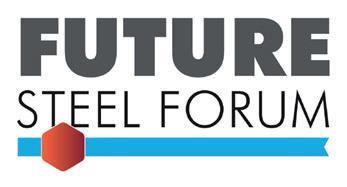





















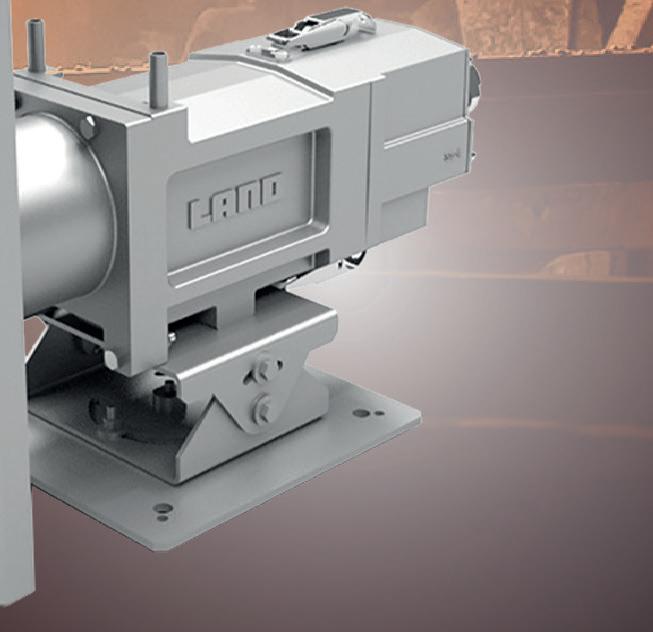

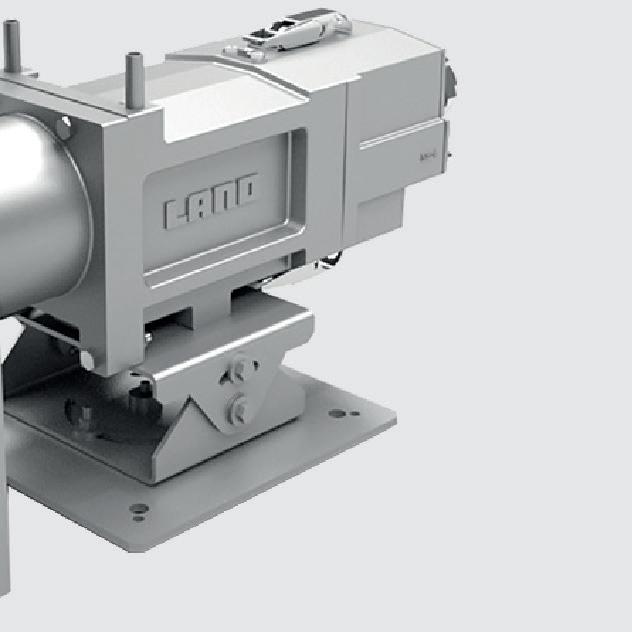
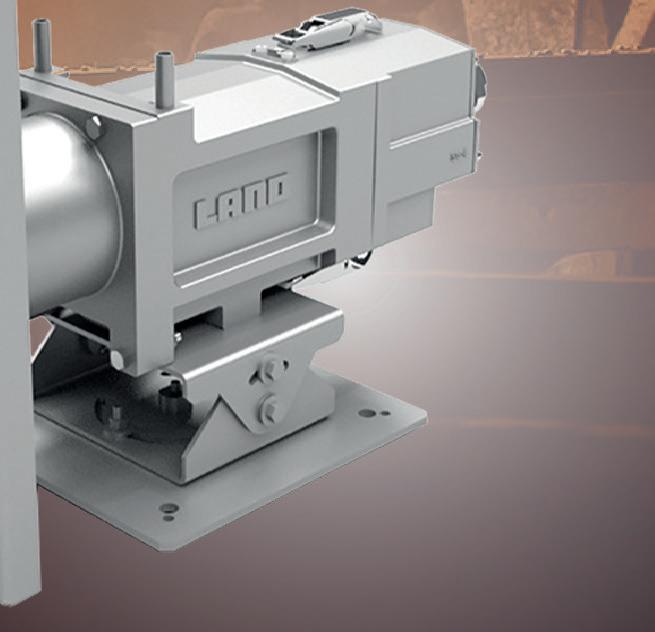



DETECTION. MWIR-640 SDS CAMERA TEMPERATURE RANGE 500 to 1800 °C / 932 to 3272 °F
ACCURATE. SLAG & STEEL.
IMAGEPro SDS 2.2 Thermal Software LEARN MORE: WWW.AMETEK-LAND.COM | LAND.ENQUIRY@AMETEK.COM Proudly exhibiting at:
FUTURE STEEL FORUM 2024

only accepting their use as some sort of transition towards the fossil free society leads as I see it to higher emissions. Let me take three examples for the sake of discussion with the caveat that they may contain misunderstandings on my side of what some companies are planning or doing:
1. Having the opinion that coal mines should close as soon as possible leads to less investments in, for example, the abatement of methane emissions. In the long term, coal mining might move to places with less capability or ambition to abate these emissions.
2. Believing that blast furnaces will be phased out as soon as enough cheap hydrogen is available leads to less investments in abating the emissions in the blast furnaces in a transition period that could well span the rest of this century.
3. Claiming that DR processes are hydrogen-ready and using natural gas ‘only’ while waiting for affordable green hydrogen may lead to CCS not being applied, although the waiting time may be long.
Most of the blast furnaces operating today are less than 30 years old and will probably be in operation well after 2050. Furthermore, new plants are erected on an almost yearly basis. The idea of closing them in the next decades and have them replaced by DR plants operating with hydrogen as reductant raises some serious issues regarding resource availability and I refrain from developing that case further except for one question. With today’s political climate, we have every reason to question the willingness of the voters in western democracies to pick up the bill for the global transition.
If we accept that we probably will have to use fossil reductants for the decades to come there is a lot to do in order to reduce emissions:
I. Securing safe coal mining with low methane emissions should be the first step together with avoiding leakages of natural gas.
II. The low hanging fruit is probably to improve the overall energy efficiency like blast production and improve the use of waste heat, but the main reduction comes from reducing the coke rate. We need just



under 300 kg of coke per ton hot metal to secure the permeability in the furnace which means we can reduce and replace a little over 200kg and there are several ways to do that. Biomass, hydrogen, and oxygen enrichment are some examples. There are several projects doing this at the moment, most of them outside Europe.
III. Charging low emission DRI is a way to decrease the part of the coke used for reduction of ore. Normal DRI reduced with natural gas would create a small reduction and using low fossil DRI produced with natural gas and CCS would be better but the reduction would still be in the limit of the 200 kg mentioned in bullet II.
IV. Finally, CCS could be the natural goal for blast furnace plants. In the European Union, project ULCOS was developed with the best possible metallurgical expertise. After proving the concept in the pilot blast furnace in Luleå, nothing really happened. If Europe wants to lead decarbonization, the best contribution to the global endeavour would probably be to pick up where we stopped and make the oxygen blast furnace with top gas recycling and CCS the new normal, and the cheapest way to produce iron.
When writing this, I saw a presentation on my Linkedin feed from the advanced Korean steelmaker POSCO outlining its decarbonization pathway. The last slide is about the final step, which is DRI production with hydrogen. It has the text: ‘Intensive

“Who will give the blast furnace plants in countries with a smaller GDP per capita some “intensive support”? ”




Government Support Needed’ and the last slide reads: “POSCO will do the best to realize ‘2050 Carbon Neutrality’”. South Korea is rich. Who will give the blast furnace plants in countries with a smaller GDP per capita some ‘intensive support’?
In the low emission metallurgical landscape of tomorrow, many different reduction processes and raw materials will compete: coal with CCS, natural gas with CCS, syngas from biomass with biogenic CCU, hydrogen from electricity and in the end, perhaps even electrolysis. To reach a desirable end we need time and resources guided by solid knowledge and realism, not wishful thinking.
Come to think of it, the sloth-strategy of survival is ‘not to be noticed’. A lot that does not make it to the headlines is actually occurring in the industry following ordinary business logic and resulting in inventions giving lower GHG emissions. That gives some hope. The rest is hard work!
25 years to 2050 – and counting. �
Steel Times International FUTURE STEEL FORUM 2024 41
Green steel supply 2025-2035: key trends and challenges

Decarbonization is the main trend in the steel industry. Steel producers set ambitious targets to decrease carbon intensity and develop decarbonization strategies. Steel consumers sign agreements concerning ‘green’ steel supplies. Automotive companies and producers of home appliances report about the first trials of ‘green’ steel in their production. It seems that the ‘green’ steel revolution is in full swing. But let’s not rush to draw conclusions and understand what is happening fundamentally.
Problem of definition
‘Green’ steel is a marketing term. There is no exact definition of ‘green’ steel. Everyone has their own answer to the question: which steel is green? Companies also use other terms:
� fossil-free steel (produced without the use of fossil fuels)
� zero carbon steel (produced without any CO2 emissions at all)
� low-carbon steel (produced
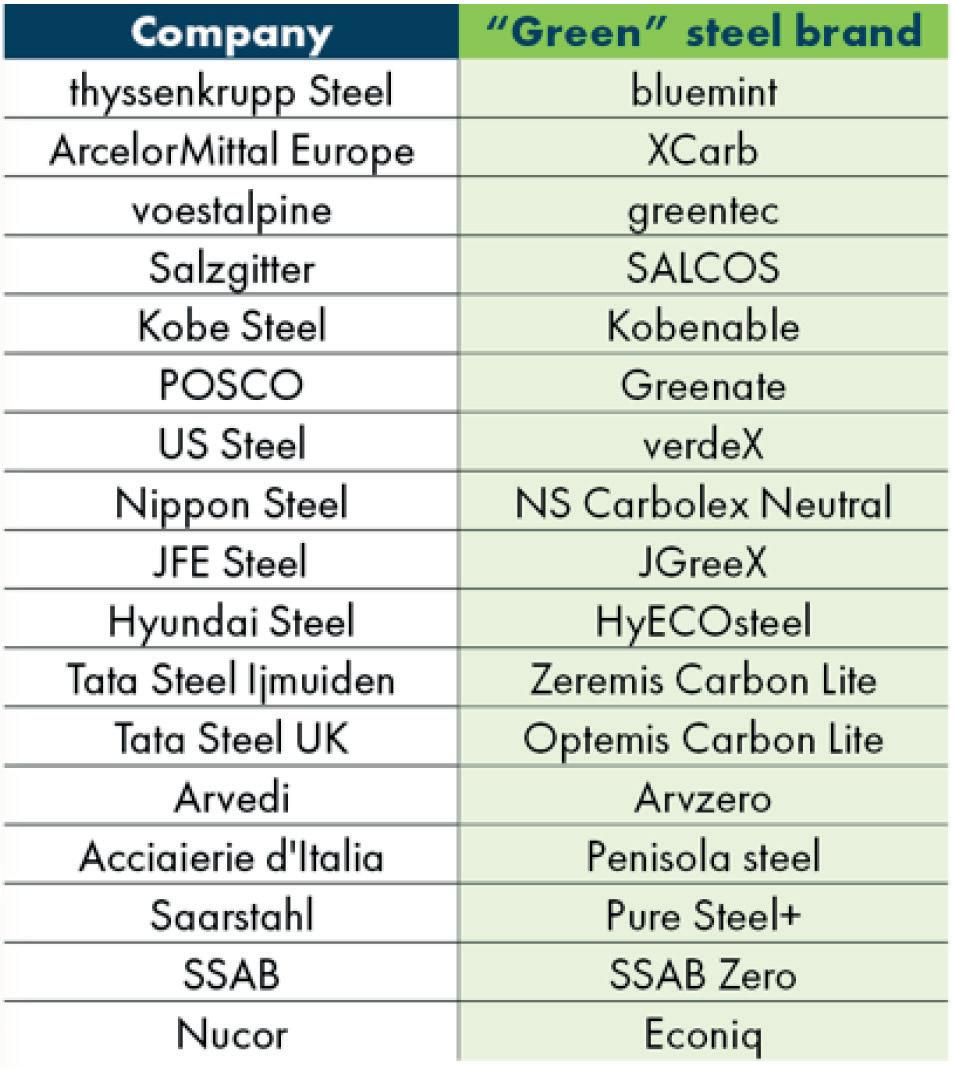 *CEO, GMK Center
*CEO, GMK Center
42 FUTURE STEEL FORUM 2024 Steel Times International FUTURE STEEL FORUM 2024
less carbon emissions) etc.

There is an increasing amount of uncertainty concerning the implementation of decarbonization projects after 2030, which along-
side the inexact definition of ‘green steel’, points to a degree of unpredictability in the future market, says Stanislav Zinchenko*


with significantly lower emissions than conventional production)
� net zero, or carbon neutral steel (produced with minimized carbon intensity, while any remaining emissions are offset)
� CO2 reduced steel (produced with
A lot of steel companies have already registered special brands for supplies of ‘green’ steel. The majority of those brands are based on certificates which follow the mass balance approach. It does not mean that offered steel products are physically produced with lower carbon intensity. Brand development outpaces technology development and also outpaces technological progress. When technologies are ready, steel companies will be able to offer physically decarbonized steel products. Now we see only intentions to produce such steel in the future, as there are no commercial volumes of ‘green’ steel on the market.
Key factors influencing future ‘green’ steel supply
A lot of factors will influence ‘green’ steel supply in 2025-2035. Due to carbon pricing, production costs of green and conventional steel will become closer. Available decarbonization technologies will define the carbon intensity of produced steel. Investments in ‘green’ steel projects will impact on possibilities to construct ‘green’ steel facilities. Implementation progress of ‘green’ projects will define the speed at which new capacities are added. ‘Green’ premium will impact the attractiveness of ‘green’ steel production. Demand for ‘green’ steel will directly affect volumes of ‘green’ steel supplies. The
difference in ‘green’ steel production costs will define sources for ‘green’ steel supplies. Production volumes of green steel will depend on availability and price of green energy, green hydrogen, and DR-grade iron ore. The list of factors can be continued for a long time, but let’s look closer at the main ones.
CO2 price
Carbon price is considered to be a great driver in decarbonizing the steel sector. CO2 price in the EU ETS will grow in the future. One of the reasons is the declining emission cap. Another reason is reducing free allocations due to the introduction of CBAM.
In fact, CBAM will increase carbon costs both for domestic producers and imports because its introduction will lead to increasing demand for carbon allowances and increasing carbon prices. Rising carbon costs, in turn, create stimulus for ‘green’ steel production.
Of course, carbon pricing doesn’t only grow. It can sharply decline due to changes in gas prices, economic activity, and electricity mix. We expect that such volatility will remain until CBAM and green steel technologies are fully implemented.
Maturity of technologies
The readiness of decarbonization technologies will define the types of capacities which will be commissioned, as well as the timing of ‘green’ steel supply. Main decarbonization technologies will be

Steel Times International FUTURE STEEL FORUM 2024 43 FUTURE STEEL FORUM
2024


THERE ARE ONLY BENEFITS WITH OUR ELECTRIC HEATING SOLUTIONS!
Steel is going electric: Are you part of the change?







Download our litepaper Electric heating in numbers by scanning the QR-code.
SILENT 100% 95% ENERGY EFFICIENCY EMISSIONS
TEMPERATURE PRECISION +/- 1°C
TEMPERATURES 1,850°C
ZERO CO ²
FUTURE STEEL FORUM 2024

mature after 2030. BF-BOF capacities also be retrofitted to reduce carbon emissions with the help of the following technologies: CCUS, gas injection in BF, increased usage of scrap and usage of biomass. The main ‘green’ technologies are hydrogen-based direct reduction and iron electrolysis.
State aid
Decarbonization investments are mainly driven by governmental aid in the EU. In 2023, European governments announced €8.7 billion for the decarbonization of the steel sector. The projects that received state support mainly aim at transitioning from the BF-BOF to DRI-EAF route. ThyssenKrupp is different from the general trend – the company received €2 billion for the construction and installation of a direct reduction plant and two melting units. European governments plan to allocate aid in different forms: direct grants, soft loans, OPEX compensations etc. All these instruments will help European steelmakers to construct new ‘green’ steel facilities.
Green premium
Green premium is calculated as the difference between prices of green and conventional products. It shows how many green products are more expensive than conventional ones. ‘Green’ premiums could accelerate implementation of low-carbon steelmaking projects making them more attractive.

In our opinion, ‘green’ premiums can exist at the first stage of ‘green steel’ market evolution.
First producers of ‘green steel’ can receive ‘green’ premiums until market supply increases. In the long-term future we assume that ‘green’ premiums will be an unsustainable practice. On the one side, difference in production costs and prices of ‘green’ and conventional producers in 2030 will not be significant.
However, we see balanced supplydemand ratio on the ‘green’ steel market over the 2030-2035 period. There will be no shortage of supplies, which eliminates the

possibility of establishing ‘green’ premiums.
Forecast of ‘green’ steel supply
The European steel industry may decarbonize about 45% of current steelmaking by 2035. This figure does not contain scrap-based EAFs. We include in our forecast solely the production of ‘physically reduced’ steel. In our opinion, production of ‘certificatebased’ steel should not be recognized as decarbonization.
GMK Center distinguished ‘green’ and low-carbon steel based on their carbon intensity: ‘green’ stee l= 0.25 tons of CO2 emissions per ton of steel, low-carbon steel = 0.26-0.6 tons of CO2 per ton of steel.
We believe that all projects constructing ‘green’ steel capacities in the EU to 2030 have already been announced. There will be no new projects.
Financial performance
There is high uncertainty about projects after 2030 when project implementation will depend on how many companies achieve their emissions reduction targets. If companies meet their goals, it is quite possible that there will be no new large-scale projects until 2035.
The financial performance of companies over the period 2027-2030 will also impact on announcements of projects after 2030. Market stagnation and unsatisfactory results from past projects may negatively affect the expansion of capacity. �
Steel Times International FUTURE STEEL FORUM 2024 45




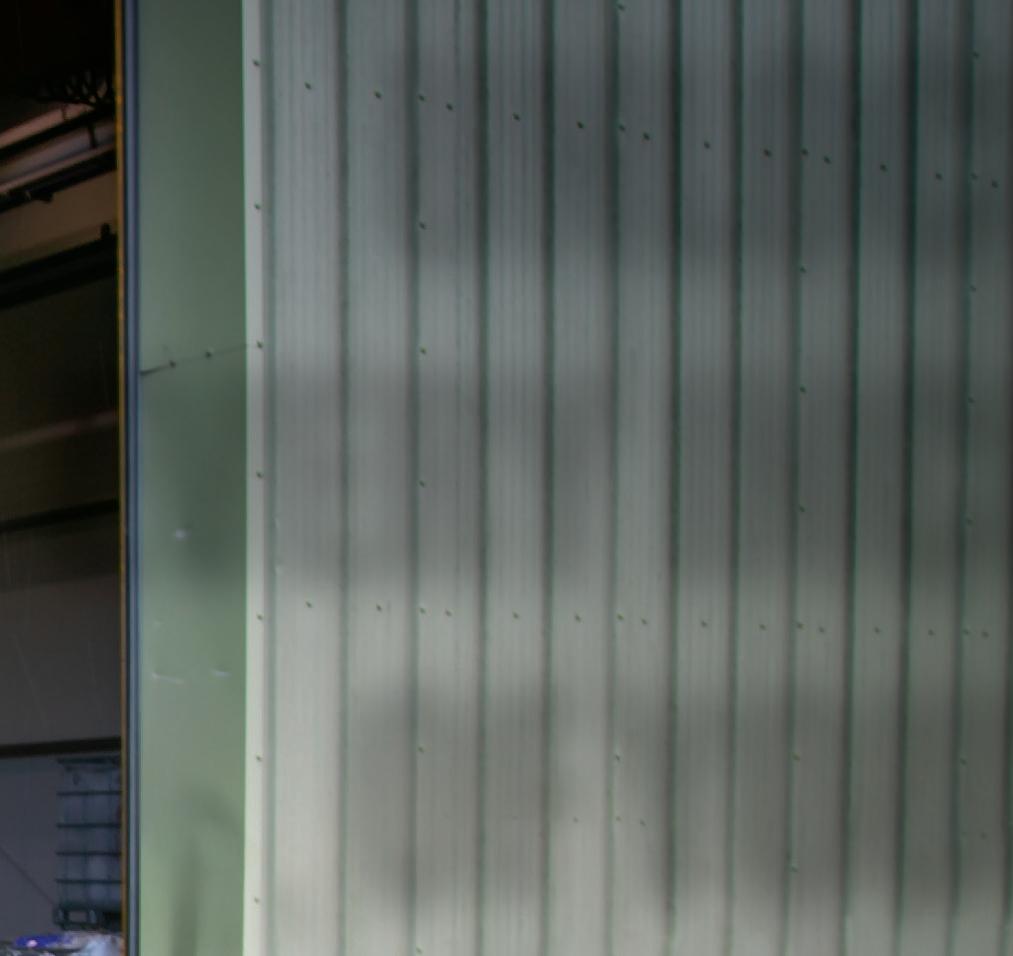
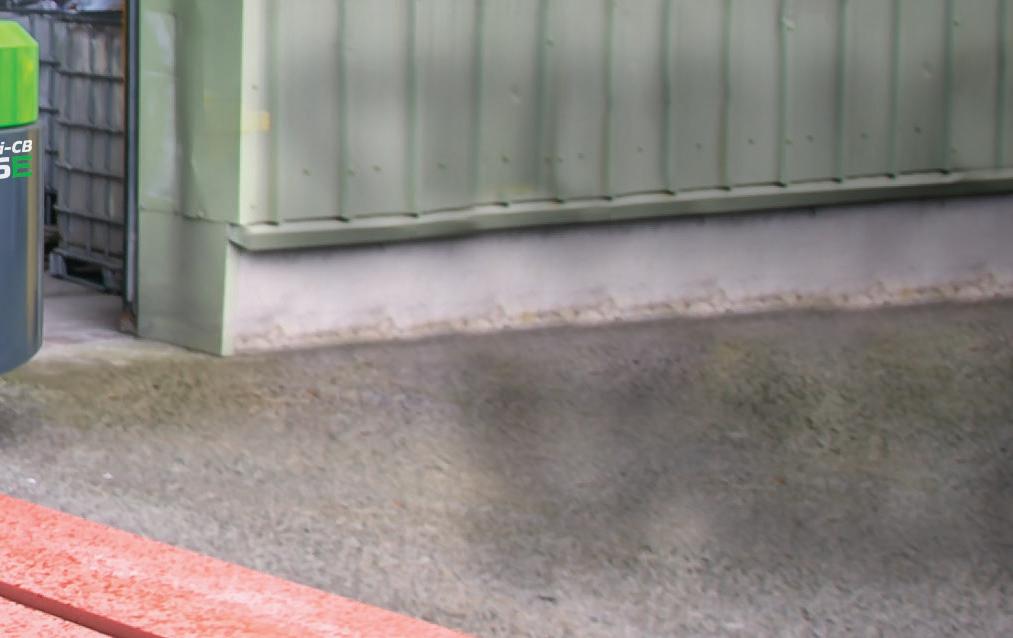

ENHANCE THE SAFETY, STORAGE AND EFFICIENCY OF YOUR LOGISTICS WITH COMBILIFT
For 25 years, Combilift has been revolutionising the way companies handle and store goods. We help companies of all sizes and from every industry to maximise the capacity, safety and efficiency of their warehouse and storage facilities.
Our pioneering product range of multidirectional, articulated and pedestrian forklifts, straddle carriers and container loaders allow you to manoeuvre long loads safely, reduce aisle widths and increase the amount of space available for storage.
CONTACT US TODAY
To find out how Combilift can help you unlock every inch of your storage space.



combilift.com 25
UNLOCK EVERY INCH OF YOUR STORAGE SPACE!
2024
Production planning tools for liquid phase and hot rolling

There are many challenges involved in planning liquid phase steelmaking and hot rolling, and businesses must adapt, utilizing approaches that prioritize optimization and efficiency.
By Dr. Falk-Florian Henrich* and Dr. Vladimir Finkelshtein**
Production planning is usually done in multiple stages, including mid-term or longer-term planning and short-term line scheduling. This article focuses on short-term scheduling for melt shops and hot rolling mills.
Scheduling melt shop and hot rolling mills poses specific challenges due to liquid phase production. In contrast to other manufacturing lines, liquid phase steelmaking has no offswitch. Deviations can easily cascade. To make things worse, one must accept a tight coupling via direct charging and hot charging between liquid phase and hot rolling in order to maximize throughput and efficiency.
Planning systems and optimization tools have to support a great variety of set-ups and KPIs. A typical mini-mill with thin-slab casting and rolling will aim for different kinds of optimizations compared to an integrated steel mill running a BOF shop and slab casters. Another mill might aim to balance slab and billet production. Individual stages of the processes and the manufacturing network predetermine many constraints, which have to be fulfilled by all production schedules. The following sections discuss a selection of concrete scheduling problems
and consequences for scheduling tools and software.
Seemingly simple objectives lead to complex challenges
Introducing one additional optimization on top of an existing scheduling strategy often requires the planner to take into account many additional parameters. We illustrate this by introductory examples below.
Example 1: As an easy example, let’s assume production suffers from high slab retrieval times in the slab yard, which lead to sub-optimal hot rolling schedules. This bottleneck can be eased with short-term scheduling. Slabs with short storage time could be put closer to the charging table. In this way, the cranes will make more short trips to collect the slabs. Moreover, if the crane can handle multiple slabs at once, we can store slabs that will be rolled consecutively in the same pile, which will save multiple crane roundtrips.
To implement this seemingly simple strategy, one will need to plan batches of consecutive slabs in the continuous casting
machines and in the rolling programme, as well as satisfy the slab piling rules of the slab yard.
The slabs must also have similar timing restrictions. If one of the slabs requires an additional treatment, like scarfing or cutting, we might not be able to hot roll it on time with the rest of the batch.
For this strategy to succeed, one needs to have multiple future hot rolling programmes ready before the slabs are cast. This in turn also requires creating multiple casting programmes in advance. And creating a single casting or rolling programme manually may take hours.
Example 2: Assume the slab yard is equipped with thermal boxes for heat preservation. Then the scheduler must decide which slabs should be stored in a thermal box, and which should be stored outside. This decision depends not only on local slab yard information, but also on global information, e.g., when, in which rolling programme, will the slabs be rolled which are currently being cast and stored?
*Founder and CEO, Smart Steel Technologies **Team lead scheduling, Smart Steel Technologies
Steel Times International FUTURE STEEL FORUM 2024 47 FUTURE STEEL FORUM



Example 3: Hot rolling programmes must follow a coffin shape width profile. If a consecutive block of slabs is to be used in the start-up, width should be increasing. If it is rolled in the descend, width should be constant or decreasing. If we aim for optimized slab handling, we have to decide if we create LIFO (last in, first out) or FIFO (first in, first out) slab piles. Again, this is a global decision, depending on multiple casting and rolling programmes.
Limitations of manual scheduling
The above strategy can help not only with slab yard optimization, and many schedulers already try to follow it. However, every plant
has a huge amount of process restrictions as well as other KPIs except for slab yard logistics. It is nearly impossible to implement a heuristic approach that will handle all of these simultaneously.
Manual scheduling using typical production planning software is limited by three main factors:
1. The number of process parameters that the user can consider is limited by the size of the computer screen, which is orders of magnitude smaller than the number constraints
2. It is very hard for a human to optimize more than two or three competing KPIs
3. Speed: creating a high-quality rolling programme for a high-throughput hot strip mill often takes hours.
Due to these limitations, planning in advance or optimizing for additional KPIs is unrealistic. Besides, any programme that is planned ahead will almost surely need to be adjusted or fully replanned, because of deviations in production.
Why automating short-term scheduling is hard
Each steel plant faces different scheduling challenges due to an ever-evolving plant setup and product portfolio.
48 FUTURE STEEL FORUM 2024 Steel Times International FUTURE STEEL FORUM 2024
Fig 1. Mini-mill, including EAF melt shop, thin slab casters, tunnel furnace, hot strip mill.
Fig 2. Integrated steel mill, including BOF melt shop, slab caster, slab handling via direct charging, hot charging, cold charging, walking beam furnace, and hot strip mill.
Fig 3. Flat and long production combined, including EAF melt shop, slab caster, billet caster, slab handling, walking beam furnaces, hot strip, and rebar mills.
FUTURE STEEL FORUM 2024

4. Left: storing a block of cast slabs in LIFO order for rolling mill start-up. Centre: storing a block of slabs of constant width. Right: reversing the order of a pile of slabs at offloading.
Traditional approaches to automated scheduling usually require strictly defined objective functions with exact dollar value trade-offs between objectives, which is a Sisyphean task in itself.
As a well-seasoned planner will say regarding a good production schedule: “I know it when I see it!”. Moreover, the trade-offs will shift in time due to changes in the economic environment, in the production portfolio, or due to changes upstream or downstream in the supply chain.
Additionally, on a daily basis, the schedulers get phone calls from stakeholders with scheduling requests of a different nature, which are hard to parametrize in a generic way.
Hence, it is imperative that any automation is supplemented with the option for the user to impose their will on what the algorithms will do. The user might ask the algorithm:
� “Please, produce this order today, even at the cost of suboptimal schedules, late orders, but without overriding hard constraints,” or:
� “In the next week, low copper scrap is scarce, so use it wisely and produce only the most urgent orders”
Such broad control is not possible with black box algorithms. The user must know how the algorithm behaves in order to steer it in the desired direction. Apart from explainable, white-box algorithms, a convenient user interface allowing for such input in a concise form is required.
The importance of reactive scheduling
Since different schedules and process steps are interconnected to each other, any process deviation in one inevitably affects the other. A common issue like a small delay in the melt shop, an equipment problem or a bottleneck in the slab yard can force changes in downstream schedules and, in extreme cases, even lead to standstills.
Today, operators on the shop floor need to quickly improvise and heal the affected programmes. In some cases, the fix is simple. But often they lack the time and a good visual data presentation to find it. Moreover, they cannot take into account how other process steps will be affected as a result of their fix.
In other cases, the magnitude of the deviation requires the immediate creation of an entirely new schedule. Most production planning software does not provide robust automated schedule creation for these cases. Operators are forced to quickly assemble suboptimal emergency schedules. Often this leads to a cascade of productivity losses.
Almost no programmes are executed without last minute changes. Each change results in reduced throughput or reduced quality and eventually production orders are not delivered on time. Reactive rescheduling must be a part of scheduling and involve the schedulers.
Let us go back to our example with batches of slabs in piles. We could have perfectly planned a casting and a hot rolling programme, which resulted in a pile of six slabs lying in the slab yard very close to the charging table waiting to be rolled together. Meanwhile, the rolling programme had to
be cancelled and a new one created. We should attempt to roll these six slabs one after another and as soon as possible, since we prefer to use slabs that don’t require long crane trips. A person doing manual rescheduling under time pressure, looks at a huge table with available slabs in the slab yard with many parameters and can easily forget these six slabs.
Better production planning and scheduling software
Based on the discussion in the preceding sections, it becomes clear that lacking software support causes many steel mills to leave large optimization potentials in liquid phase and hot rolling scheduling untapped. Many experienced planning experts either rely on 100% manual schedule creation or use automation only in limited use cases. Production planning software must be greatly improved in the following areas.
1. Schedule generation is fast enough, even for emergency situations.
2. The user has 100% insight into and control over the underlying algorithm.
3. Configuration of the scheduling algorithm is user-friendly and robust.
When automated planning software reaches higher level w.r.t. capabilities, robustness, and user-friendliness, then expert users and shop floor operators will move to an optimized, dynamic operation of melt shops and hot rolling mills. By doing so, they will trigger substantial productivity and efficiency gains in almost all mill set-ups. �
Steel Times International FUTURE STEEL FORUM 2024 49
Fig.

ESTEP initiatives towards green steel
The
European Steel Technology Platform (ESTEP) details its ongoing projects, partnerships, and strategies,
in driving the industry toward a decarbonized future.
By Akhilesh Swarnakar1, Delphine Snaet2, Klaus Peters3
The decarbonization challenge of the EU steel industry responds to the EU goals and policies to achieve the European Green Deal, the Fit for 55, Clean Planet for All strategy, and the Paris Agreement targets.
Accomplishing climate neutrality by 2050 requires a fundamental transformation across various sectors, with the steel industry being one of the most significant due to its high carbon footprint and being at risk of losing its competitiveness. Achieving this ambitious goal will require a holistic approach that combines technology, policy, and market mechanisms. Furthermore, a sustained effort, substantial investment, and a collaborative approach that bridges the gap between current practices and the ideal of industry-wide transformation can turn the goal into a reality. That applies to technologies and is equally important for the policy framework.
The European Steel Technology Platform (ESTEP) strongly supports the steel sector in addressing the decarbonization challenge. It brings together all major stakeholders of the European steel industry, such as steel producers, technology providers, universities, research and technology organisations and plant builders. ESTEP is at the forefront of efforts to innovate and implement sustainable steel production practices by fostering collaboration among the diverse stakeholders in the steel value chain. The core elements of ESTEP, comprising six working groups named Circular Economy, Low Carbon & Energy Efficiency, People, Smart Factory, Transport and Mobility, and Energy Market Application, contribute to its organizational
outcomes. All the activities fall within the scope of its Strategic Research Agenda (SRA).
The ‘Clean Steel – Low CO2 Steelmaking’ as an example for a publicprivate partnership (PPP) exemplifies how ESTEP is facilitating collaboration aimed

at transforming the steel industry to make it more sustainable and environmentally friendly. This partnership highlights the commitment to developing and deploying technologies and strategies that reduce CO2 emissions, a critical step towards achieving climate neutrality by 2050. The objectives and impacts of the Clean Steel Partnership (CSP) are strongly supporting the work programme of Horizon Europe and will generate a number of results in different spheres, such as CO2 reduction, industry
and EU competitiveness, resource efficiency, jobs, and skills. This Clean Steel Partnership is based on a memorandum of understanding (MoU), signed by the public and private side, the European Commission and ESTEP, respectively. The CSP ensures a co-ordinated, sustainable approach across stakeholders, technologies, and production routes.
The CSP nurtures the long-term vision of supporting European leadership in the transformation of the steel industry into a climate-neutral sector. By setting concrete targets for constructing four demonstrators with CO2 emissions reductions of 55% by 2030 and 80-95% by 2050 compared to 1990 levels, the CSP provides a clear and actionable roadmap for the industry and its ecosystem. The development of a tailored set of 12 technological building blocks underpins this roadmap, addressing three areas of intervention: carbon direct avoidance, smart carbon usage and circular economy. While most of the building blocks are process orientated, one is dedicated to digitisation and skills development as important enablers. The CSP mobilizes €1.7 billion, with €1 billion contributed from the private sector and €350 million each from Horizon Europe and the Research Fund for Coal and Steel (RFCS). The funding of pilots and demonstrators through the RFCS-Big Ticket call makes a significant contribution to advancing clean steel production. The specific research and innovation requirements are outlined in detail in the Strategic Research and Innovation Agenda (SRIA) of the CSP.
Circularity is at the heart of sustainability,
Steel Times International FUTURE STEEL FORUM 2024 51 FUTURE STEEL FORUM 2024
1.
Project manager, ESTEP. 2. Project manager, ESTEP. 3. Secretary General, ESTEP


FUTURE STEEL FORUM 2024

fuelling future innovation and ensuring the EU green deal targets a climate-neutral and resilient future. From this perspective, ESTEP is continuously engaging in communication and dissemination of various activities and challenges faced by the European steel sector. Following a long series of events on innovation, research and technology, the aim of ESTEP’s annual conference between October 3-5, 2023 in Barcelona was to support the transformation and position of the EU as a global circular economy powerhouse. Having more than 100 participants, with more than 30 innovative projects from all over the world, the conference focused on discussing the various aspects surrounding ‘the circular economy driven by European steel’. During the high-level session, Peter Dröll, director for prosperity, research and innovation at the European Commission, stated that ‘as the backbone of the EU economy and our clean technology efforts, the steel industry has the unwavering support of the Commission on its way to circularity. We know what we need to do, and we know we have to do it together’. Nevertheless, even though the consensus on the need for collective action, large-scale transformations and new plant constructions often proceed as single company projects. Therefore, the collaboration needs to be fostered by additional means that complement the projects and are beneficial to them. One promising solution is the ESTEP events, which offer information and know-how exchange among the project experts.
The multiple keynote speakers emphasized the introduction of digitalization in production using data analysis, and machine learning for improving the circular economy and more efficient production. The twin transition is a challenge of the industrial transformation towards sustainability. However, it needs an integrated approach. Industry 5.0 is based on the humanisation of the technological environment in a system called the Human Cyber Physics System (HCPS), integrating humans, cyber systems, and physical systems to achieve precise industrial goals at an optimized level.
With the ambition to uplift traditional steelmaking through process modernisation and product optimization via introducing digital means to achieve a significant reduction in carbon footprint, ESTEP
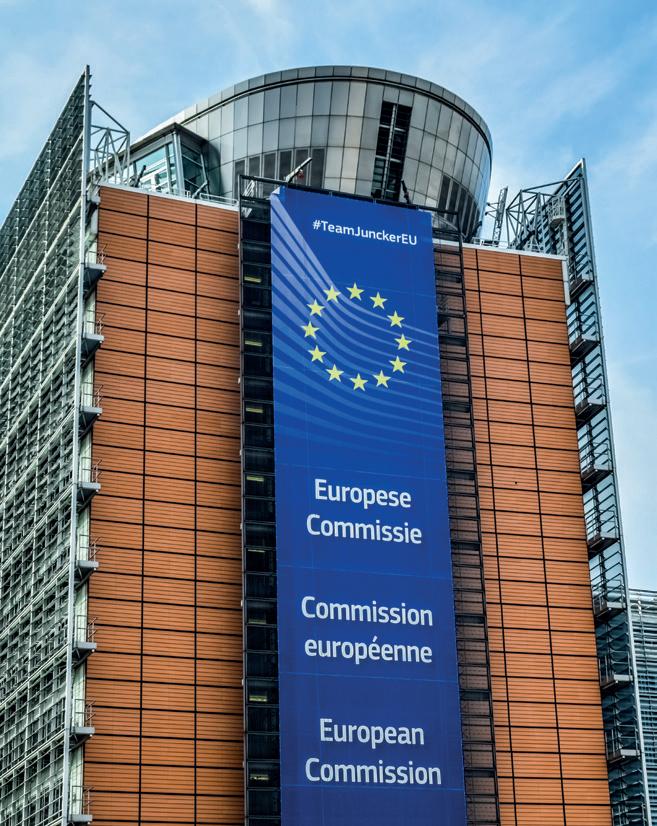
organised its ‘Digital-4-Environment (D4E)’ workshop on February 20-22, 2024 at Bardolino, Italy. The focus on digitization within the steel industry represents a significant step towards embracing disruptive trends and creating new horizons. The shift towards digitization embodies a transformative opportunity for steel manufacturers to stay competitive, meet evolving market demands, and advance towards a more sustainable future.
While EU steel producers transform towards low-CO₂ steelmaking, the challenges are huge, and there is not always a reliable and affordable solution regarding energy supply. This transition also requires time, resources, and a supportive policy framework. In the interim, substantial reductions in carbon footprints must also be achieved in existing steelmaking routes, such as the blast furnace route. The innovative ideas presented in the D4E conference showed how using digital tools for the early detection of operational issues, coupled with enhanced efficiency and improved accuracy, can reduce production losses and improve traditional ironmaking processes. This underscores the importance of leveraging technology to improve the performance of existing infrastructure while transitioning to more sustainable practices.
As mentioned in the SRIA of the CSP, the broad stakeholder engagement, including other sectors, is necessary in achieving the final goal. However, competition compliance is often a hurdle for collaboration, which is also true for joint R&D activity. ESTEP gives the highest priority to being compliant with competition rules, and goes even further by actively supporting the community to collaborate on research and innovation. In strong collaboration with EUROFER and external compliance lawyers, a detailed guidance document was developed. At its core is the three-axes-model, which is a tool for self-assessment with regard to competition compliance. The three-axis module is easy to apply. The draft agenda of ESTEP meetings are always checked with regard to competition compliance and in
complex situations, the advice of competition compliance lawyers is added (as mentioned in point 3 below). Dedicated actions fostering joint R&D activities are:
1. Competition compliance guidance document
2. Yearly competition law compliance refreshment training
3. On the spot clarification in challenging meetings by external compliance lawyers
4. Deep dive clarification paper by ESTEP working group smart factory
ESTEP is also involved, together with its members, in standardization activities (existing or new ones). The involvement in pre-standardization efforts is particularly noteworthy. There are three ongoing projects dealing with three versatile topics related to test methodologies and digital solutions for a product, considered by ESTEP focus groups Transport & Mobility and Smart Factory. The collaboration with Steel Institute VDEh and ESTEP is already agreed, and discussions with other standardization bodies are on the agenda in the near future. The collaborative work related to pre-standardization is an excellent example of creating a common understanding for a better quality of steel products with a more unified approach from the steel sector, which ultimately will benefit the end customers.
ESTEP consistently provides information on opportunities to collaborate for upcoming EU research funding, such as Horizon Europe and the Research Fund for Coal and Steel. Playing a crucial role in fostering collaborative research and innovation, ESTEP drives progress towards cleaner and more efficient steel production practices while facilitating dialogue and collaboration within the steel sector. There are multiple opportunities in the coming months serving the goal of collaboration, which can be found on its website (www.estep.eu). The annual ESTEP event will take place on October 29-31, 2024 in Linz (Austria) hosted by voestalpine. The event will commence with a plant visit at voestalpine, followed by a two-day high-level conference opening.
The conference themes for the 2024 ESTEP annual event, open to both ESTEP members and non-members, will focus on hydrogen steelmaking (3rd ESTEP conference) and the circular economy. �
Steel Times International FUTURE STEEL FORUM 2024 53
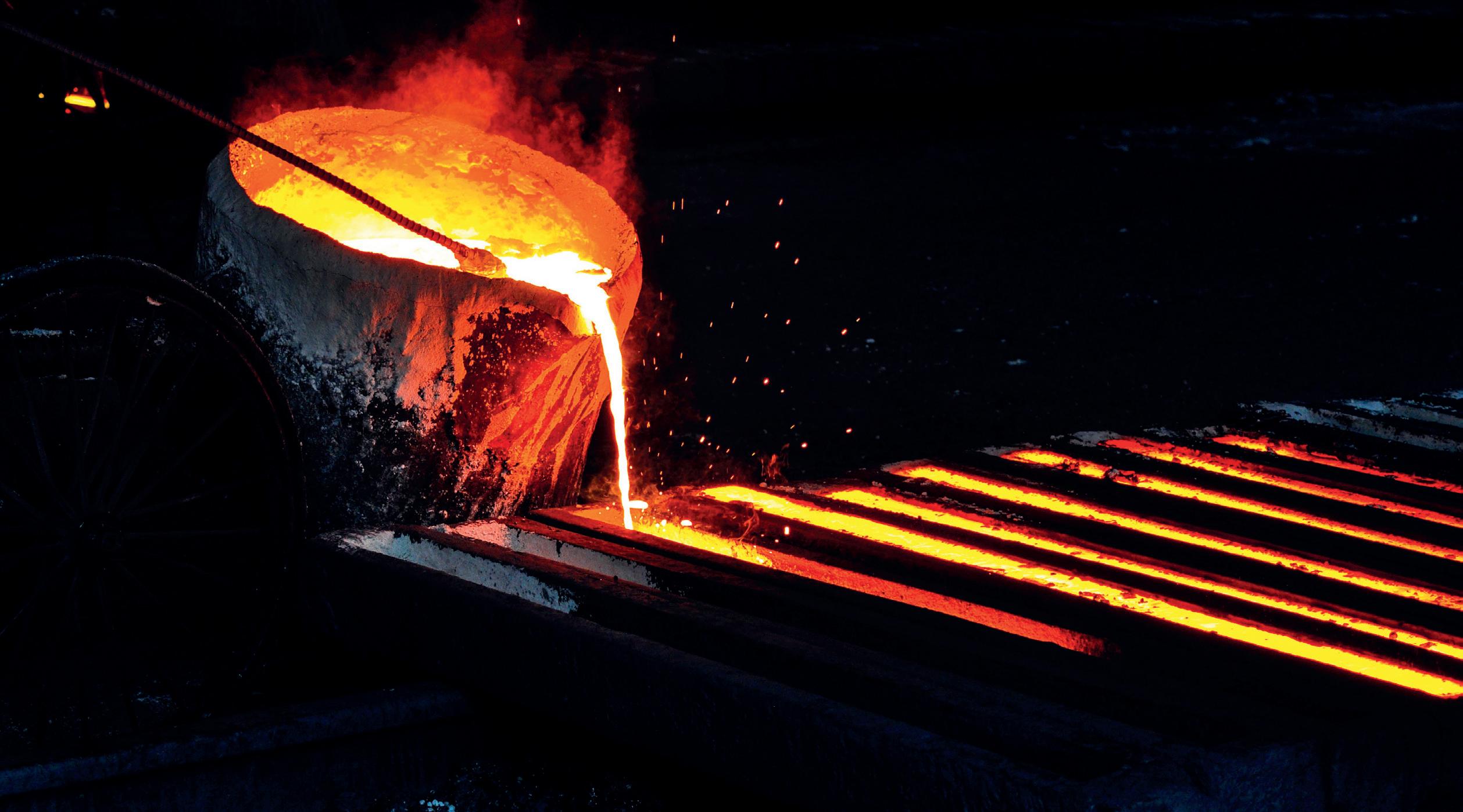
Unlocking data to generate tangible value
The metals industry stands at a crossroads. The challenge facing industry decision makers is to significantly reduce carbon emissions while improving productivity and operational efficiency. Decarbonization is essential for long-term operations, and energy efficiency is paramount for both environmental and economic reasons. Artificial intelligence (AI), data analytics, and digitalization offer a powerful toolkit for building the future steel industry.
By Tarun Mathur*
In recent years, many organizations are tuning in to the huge potential of AI and big data to achieve efficiency and minimize downtime while reducing carbon emissions.
As recently as five years ago, only 10-20% of the industry was ‘connected’ in this way with organizational siloes commonplace. Since then, progress has been made. These siloes are now being replaced by cloud or edge solutions where data can be stored, accessed, and shared, enabling gains in productivity, quality, and yield. It means that an industry traditionally considered as conservative has taken important steps. In the last two years, we have seen more AI applications relevant to the industry and more companies displaying an appetite to invest. ABB’s value-driven industrial software solutions are powered by advanced data analytics, machine learning (ML) and AI. They support the goals of metals manufacturers in areas such as operational excellence, improved asset and process performance and sustainability while facilitating the digitally connected workforce and
safeguarding operations via proven industrial cyber security. Digitalization gives visibility and control along the entire value chain –and is a key enabler for sustainable metals manufacturing.
Digital transformation continues to emerge as a lynchpin for long-term business success, and AI and big data have become increasingly synonymous within that. However, for many, there are still questions to be answered about just how they can unlock their business potential using these methods.
Data: an energy savings enabler Steel production remains energy-intensive. Furnaces must reach extremely high temperatures, up to 1,800˚C, and vast amounts of power fuel the machinery that transforms raw materials into the backbone of modern civilization. This insatiable appetite for energy translates to high costs for steel producers and a significant environmental footprint. However, the tide is turning. AI is emerging as a potent weapon in the fight for a more sustainable and cost-effective steel
industry, specifically by tackling the energy challenge.
At this stage, it is important to note that the idea of simply gathering data in a pool and then applying AI and ML to magically transform industrial operations is flawed. What is often missing is a conceptual understanding of how the data got into that pool – and, just as important, how it can best be leveraged to add real value to a business.
Imagine a vast network of sensors embedded within the labyrinthine steel production process. These sensors, the industry’s digital eyes and ears, continuously gather data on furnace temperatures, energy consumption, and raw material properties. This data becomes the fuel for AI algorithms, acting as a virtual brain constantly analyzing and optimizing energy use.
The beauty of this model is that it can obtain, process, and analyze data from across the entire production chain, identifying bottlenecks and areas for improvement. For instance, AI might suggest adjustments to conveyor belt speeds or optimize cooling
*Global portfolio and sales manager digital, metals industry, ABB
54 FUTURE STEEL FORUM 2024 Steel Times International FUTURE STEEL FORUM 2024
FUTURE STEEL FORUM 2024

processes, all leading to reduced energy consumption across the entire production chain.
Reactive repairs to crystal ball accuracy
The harsh reality of reactive maintenance, the traditional approach where repairs are only made after equipment fails, is critical equipment breaking down and production grinding to a halt while precious time – and money – are lost in the process of diagnosing and fixing problems.
More than ever, companies realize that Asset Performance Management (APM) plays a key role in remaining competitive and overcoming challenges to stabilize productivity and reduce uncertainties. Avoiding unplanned shutdowns and reducing unnecessary interventions are the key objectives of companies that are mature in reliability-centred maintenance. At every point of the journey, there is value to be gained by applying APM to operations in terms of improved productivity, safety, and costefficiency.
Unplanned failures
Unplanned equipment failures can disrupt production schedules and cost steel producers dearly. The network of sensors once again plays its part as the symphony of data that they collect on any equipment’s health are fed into a sophisticated algorithm that acts as a digital crystal ball.
By analyzing historical trends and identifying subtle deviations from the norm, the AI can predict equipment failures well before they occur. This level of foresight allows for preventative maintenance to be scheduled, averting a potentially catastrophic breakdown. Beyond unplanned downtime, catching issues early has extended benefits including prolonging equipment lifespan, and improving Original Equipment Effectiveness (OEE), a key metric for production efficiency.
As AI technology continues to evolve, we can expect even more sophisticated solutions to emerge. Imagine self-learning AI systems that not only predict failures but also recommend optimal maintenance procedures. This level of intelligent automation can create unprecedented efficiency in steel mills, where equipment operates seamlessly, and breakdowns become a relic of the past.
Breaking the mold for the steel industry
JSW Steel’s Dolvi Works plant in India is just one of the examples of businesses reaping the rewards of digitalization. ABB Ability™ Smart Melt Shop, a comprehensive solution that leverages data from sensors and process equipment, has boosted productivity by up to 24kt/yr at the site and cut energy costs by around $250,000. This intelligent system optimizes crane and ladle tracking, leading to faster casting speeds and reduced arcing in the ladle furnace.
In addition, the ABB AbilityTM Energy Management System for industries enabled site-wide optimization of energy consumption and availability for a large European steelmaking site. The solution covered steam yield, by-product gases, energy purchase and production, including site plants and turbines and resulted in 10% less flaring of gases, 15% improvement in accuracy of electricity purchasing forecasts and an average saving of 15,000 Euros per month.
By bringing transparency around energy consumption and sustainability performance, both sites were able to deliver on their sustainability commitments and regulatory requirements while maximizing energy cost savings.
Forging a brighter future
The potential benefits of data utilization in steel production are multi-faceted. However, no-one said that the path to unlocking universal digital transformation would be without its hurdles. Legacy equipment may lack the necessary sensors to collect data for analysis, and integrating these solutions can be time-consuming and the upfront investment costs for sensor networks and digital software can be a barrier for some producers.
The good news is that these challenges are not insurmountable. The cost of implementing AI is steadily decreasing, and the return on investment (ROI) is significant. Steel producers can invest in retrofitting older equipment with sensors, and collaborations between industry experts and digitalization specialists can bridge the knowledge gap. Additionally, companies like ABB are actively developing user-friendly software solutions specifically designed for the steel industry, making adoption easier and more accessible than ever.
The positive impact of AI extends beyond just the technology itself. By embracing AI, steel producers can foster a culture of datadriven decision making, leading to continuous improvement across all aspects of operations. The marriage of technology and people capabilities can be directly seen with the use of ABB’s data analytics and collaborative technology. Customers of all sizes can gain a competitive advantage by testing in virtual environments or by seeking further domainspecific advice. Often, when the ABB Ability™ Data Analytics Platform for metals is in place, metals producers can learn and conduct simulations based on a range of scenarios, adjusting materials parameters and pushing to limits. It also acts as a plant and enterprisewide data integration, monitoring, data analytics and optimization platform. Further to this, the ABB Collaborative Operations Centre (COC) for Metals provides roundthe-clock service to help predict future failures or potential maintenance issues. The COC team is on hand, with AI tools and big data learnings from real processes at their disposal for customer use.
The future of steel: sustainable, efficient, and powered by data Looking ahead, the future of the steel industry is undeniably data-driven. As data analysis tools and AI technology continue to evolve, we can expect even more sophisticated solutions to emerge. Imagine self-learning systems that not only optimize processes but also continuously adapt to changing conditions and refine their strategies over time. This level of data-driven intelligence could revolutionize the industry, creating a future where steel production is not just efficient and cost-effective, but also remarkably energyconscious and environmentally sustainable. By embracing data and embarking on this digital transformation journey, the steel industry can shed its image as an energy guzzler and a reactive industry. Instead, it can forge a new path, becoming a leader in sustainable manufacturing and a shining example of how data can be harnessed to create a brighter future for generations to come.
ABB is committed to helping the steel industry on this journey by providing cuttingedge AI solutions and collaborating with industry leaders to develop innovative new applications. �
Steel Times International FUTURE STEEL FORUM 2024 55
Electrification: the lynchpin to a sustainable future

As societies worldwide push for sustainability, the steel industry faces mounting pressure to address its environmental impact. The hard-to-abate industry is grappling with the challenge of reducing carbon emissions while remaining economically viable. With the focus intensifying on decarbonization efforts, electrification of heating processes emerges as a critical intervention, promising to pave the way for a greener future.
Kanthal, a world-leading name in industrial heating technology and resistance materials, stands at the forefront of sustainable transformation. Dilip Chandrasekaran, Kanthal’s business development manager, asserts, “Most steel companies are aware that electric heating elements are not only powerful enough but also improve thermal efficiency and the work environment while contributing to quality improvements.” He adds, “Once a steel company is willing to switch to electric, we can help with the rest.”
Now, let us dig into the intersection of the latest innovations in electric heating technology, the challenges associated with the transition, and strategies to overcome them.
Where we stand today
We begin by determining what is possible today before we explore what could be possible tomorrow. Kanthal has identified three heating processes in downstream steel production that are ready for electrification – the continuous annealing line (CAL), continuous galvanizing line (CGL), and roller hearth furnaces.
“You can retrofit an existing furnace simply by replacing the gas burners in the furnace with tubes and electric heating elements, and making a few small modifications,” says Chandrasekaran.
Kanthal’s electric heating solutions allow for exact temperatures across different zones, while drastically improving the work
environment with less noise and better air quality. Through decades of working with industrial heating solutions, Kanthal has developed a broad range of materials suitable for annealing furnaces, galvanizing furnaces, and roller hearth furnaces, depending on the temperature requirements and atmospheric conditions. Kanthal can also customize its products and designs to suit specific requirements.
Ovako, a leading steel producer, has been on the path to the electrification of heating processes for the past decade. In 2012, Anders Lugnet, a furnace technology specialist at the company, was tasked with mapping all the company’s 150 furnaces and devising an action plan to reduce emissions.
56 FUTURE STEEL FORUM 2024 Steel Times International FUTURE STEEL FORUM 2024




Lugnet recommended electrifying Ovako’s heat treatment furnaces, which was not an obvious solution at the time. However, the process began in 2014, with each furnace equipped with up to 86 Tubothal® metallic heating elements. Today, 15 roller hearth furnaces have been electrified, and this move is estimated to save around 1.4 to 2kt of CO2 per year, per furnace. Several other steelmakers worldwide have also embarked on the journey towards decarbonization by electrifying their annealing and galvanizing lines.
Navigating the challenges of electrification
While the benefits of electric heating are evident, the transition from gas to electricity poses multi-faceted challenges that demand careful consideration and strategic planning. Chandrasekaran sheds light on these challenges and offers insights into overcoming them.
“One of the primary challenges in electrifying steel production lies in identifying suitable processes for conversion. While certain processes may lend themselves easily to electrification, others, like Direct Reduction of Iron (DRI), present unique complexities. The inherently high temperatures and specific operating conditions of DRI require specialized electric heating solutions tailored to withstand the rigours of the process while maintaining efficiency and productivity,” Chandrasekaran explains.
Furthermore, redefining electric power requirements and ensuring access to renewable electricity are critical considerations in electrification.
“Accurately defining the efficiency of the electric solution versus the efficiency of the gas solution isn’t easy,” admits Chandrasekaran, adding that steel companies tend to have limited knowledge of the impact that changes in heat transfer and efficiency may have on the properties of their end product.
While thermal engineering calculations can be made, these will only provide an approximate picture of the outcome. “The only way to obtain a reliable prediction is through testing – for example, by carrying out a stepwise conversion of parts of a heating zone or converting it zone by zone. Additionally, the end user must ensure that sufficient electrical power is available and that the factory has the necessary infrastructure for distribution to the electrically heated furnaces,” says Chandrasekaran.
Furthermore, the power control system will need to be redesigned. “With a gas furnace the control system can be quite simple, but running an electrical solution could be more complex, you need to understand how to control and regulate the power on the elements to avoid overheating and maximize the lifetime of the elements,” Chandrasekaran adds. “However, the upside is that the temperature control in the furnace will be significantly more accurate when using electric heating.”
Moving on, electric heating provides the opportunity to fully eliminate CO2 emissions. For this to happen, access to renewable electricity is a must, but there’s no quick-fix solution.
The volume available and its cost varies enormously from country to country. The good news is that most governments are working
to solve the problem. In the meantime, Chandrasekaran believes it is only a matter of time before switching away from fossil-based power becomes less of a choice and more of an imperative.
“All over the world, governments are requiring companies to move away from fossil fuels and most major steelmakers are all looking for ways to reduce their emissions,” he says. “Only they can make the decision but, once they do, we have the expertise and experience to make the switch to electric happen.”
Introducing Prothal® TH
Now, let’s discuss what lies ahead. Industries, particularly in the iron and steel sector, require highly efficient and reliable MW-scale electric process gas heaters to significantly reduce their carbon footprint. As a process like DRI is gradually transitioning from natural gas to hydrogen, the demand for electric process gas heating solutions for industrial and pressurized applications is on the rise. However, the MW scale lacks proven robust and safe electric solutions for heating various process gases to high temperatures (8001,100°C or 1,472-2,012°F).
To address this challenge, in 2021, Kanthal and Nycast AB entered into an exclusive license agreement for gas heating technology to develop high-efficiency MW-scale electric heaters.
These solutions, which will go under the name Prothal® TH, cater to diverse industries, offering versatility to accommodate varying process parameters such as gas compositions, operating pressure, and flow rates. A recent test at Swerim AB, a leading industrial research institute, in Luleå, Sweden, involved a medium-scale Prothal® TH process gas heater.
The tests, conducted with diverse gas compositions such as air, nitrogen, and hydrogen, demonstrated impressive results. The heating solution achieved process gas outlet temperatures up to 1,050°C (1,922°F) without issues, showcasing robust performance in handling input fluctuations while ensuring safety limits.
“Results from the testing of our current electric process gas heater design are highly promising, showcasing remarkable energy efficiency, consistent operational stability,
Steel Times International FUTURE STEEL FORUM 2024 57
STEEL
FUTURE
FORUM 2024
Dilip Chandrasekaran, business development manager, Kanthal.
Anders Lugnet, furnace technology specialist at Ovako, in front of one of the company’s 15 electric roller hearth furnaces.
Thomas Helander, R&D specialist, Kanthal.

and the potential for achieving elevated gas outlet temperatures. Additionally, our heater relies on critical subcomponents, such as electric heating elements, benefiting from our extensive expertise in their design, fabrication, and operation,” explains Thomas Helander from Kanthal’s R&D team.
While further validation is needed for operational parameters on larger installations, these tests mark a significant step forward. They indicate that the evolving Kanthal portfolio has the potential to decarbonize a wide range of applications and industry segments. The gas inlet and outlet temperature graph, along with electric power and flow rates, demonstrates the effectiveness of the Prothal® TH heater.
What the future holds
With the advancement of technology, Kanthal envisions rolling out process heaters within the next few years, with expanded capabilities for testing and demonstration planned for 2024. This innovation is not limited to the steel industry; other sectors, including cement


manufacturing, stand to benefit from this groundbreaking technology.
As the steel industry moves towards a more sustainable future, it not only reduces its environmental impact but also sets an inspiring example for other sectors to follow. With existing possibilities in electrification and revolutionary innovations like Prothal® TH
on the horizon, the prospect of widespread decarbonization appears well within our reach.
By embracing electrification and joining hands in collaborative efforts, the steel industry is not merely adapting to change but leading the charge towards a greener, more resilient future. �
THE SCARABAEUS®7500 PELLETIZING DISC

58 FUTURE STEEL FORUM 2024 Steel Times International FUTURE STEEL FORUM 2024
The graph shows the gas outlet temperature along with electric power and flow rates.
The Prothal® TH process gas heater, licensed by Nycast AB, at Swerim’s test facility in Luleå, Sweden.
SUSTAINABLE AND EFFICIENT PRODUCTION OF IRON ORE PELLETS VISIT US at the Future Steel Forum in Stockholm (June 2024) CONTACT pelletizing@haverniagara.com +49 (0) 37 31 / 419 700 IRON ORE & PELLETIZING TECHNOLOGY Scarabaeus pelletizing discs provided by HAVER & BOECKER NIAGARA are used for sustainable and efficient production of iron ore pellets. The unit’s design minimizes circulation, increasing productivity and profitability. The pelletizing discs used for agglomerating iron ore concentrates into pellets are remarkable for their very narrow particle size distribution with a target size of 10 to 14 mm, important for DR-Processes. HAVE R & BOECKE R NIAGAR A haver & boecker_half page.indd 1 26/04/2024 08:31
With over 50 years in the Steel Industry, we have a wide variety of solutions to keep your mill rolling.
Traversing Restbars
allow for quick and accurate pass changes
· Honours existing mill attachment points and guide base, no machining on your stands required
· Made from stainless steel and speci cally tailored to your mill ensuring perfect t, operation and longevity

Our roller entry guides keep your product on the pass
· Single point, centralized adjustment during operation
· 2, 3 and 4 roller con gurations
· Rigid, stainless steel construction
· Broad size range
Maximize your mill speed while meeting your quenching requirements on all bar sizes. Not just controlled cooling, but correct cooling
· Fewer surface defects and better scale control
· Available in Box, Trough and Restbar-mounted con gurations
info@fabris.com www.fabris.com 905.643.4111 Contact Us ® spiral cooling system ®
box con guration
trough con guration

Forging a sustainable future: the role of virtual twins
The steel industry is currently undergoing numerous changes, with new trends and challenges emerging as part of the decarbonization of assets and materials production. Virtual worlds are poised to accelerate this transformation. By Bertrand Orsal*
Digital twins have been in use since the 1960s, and while the technology has advanced, they still primarily consist of threedimensional models representing real objects, facilitating manufacturing and utilization.
Taking a step beyond, virtual twins are scientific virtual models of actual objects and systems. These models can be subjected to sophisticated virtual environments for testing and analysis. Steelmakers can not only comprehend the modeled object but also observe and analyze its behaviour under various conditions and scenarios.
Virtual twins enable problem-solving
in four dimensions, incorporating both 3D spatial dimensions and time. This allows for predicting and observing the future impacts of changes.
Augmented by virtual and augmented reality tools, problems and solutions can be effectively communicated to teams, enhancing their understanding, collaboration, and engagement. This is particularly beneficial in metal production, where challenges often span multiple disciplines such as metallurgy, fluid dynamics, and chemistry, necessitating communication of complex solutions to non-experts.
*Head of metal and minerals, Dassault Systèmes
Virtual twins also mitigate risks associated with implementing new energy solutions or testing products with exceptional mechanical properties, while reducing environmental impacts. In other sectors, virtual twins have expedited the adoption of innovations. Despite facing challenges such as inflation and evolving customer expectations, the industry has been sluggish in abandoning outdated practices and manual processes. This laggard evolution has created a production environment struggling to keep pace with demand. While digitization is underway, there is ample opportunity
60 FUTURE STEEL FORUM 2024 Steel Times International FUTURE STEEL FORUM 2024

for further transformation, especially concerning sustainability. Technology and tools can significantly contribute to efficient development, with software solutions enabling ecologically sound plant operations.
Industry 4.0 is pivotal in driving innovation in the manufacturing industry, particularly concerning steel and future operations. Unified solutions facilitate sharing a common operational information source, leading to simplified and more sustainable production processes, such as those seen in automotive manufacturing when carmakers and steelmakers collaborate using shared data sources.
Virtual twins are poised to play a significant role in the decarbonization of steel production, addressing mounting pressures to enhance energy efficiency and reduce environmental footprints. The evolution of energy and materials acquisition, production, and utilization will profoundly influence future lifestyles. Companies in these sectors must adapt to emerging trends to secure their place in the industry’s future landscape.
The next frontier involves consolidating all virtual twins into a unified data model and user interface, creating a platform capable of integrating any data type for collaboration,


modeling, simulation, and analysis. This transformative capability can be tailored to individual user needs and integrated with existing systems, facilitating validation of existing practices and testing of new strategies and ideas.
To support the United Nations’ carbon neutrality goals and advance environmental sustainability, steel companies must innovate and overhaul manufacturing processes. Timely action is imperative to achieve meaningful and lasting reductions in climate impact. Industry partnerships promoting innovation for carbon emission reduction will be crucial in expediting these efforts.
In life, there are no do-overs, but in the virtual realm, simulations allow for impact assessment before real-world action. Virtual worlds inspire new perspectives, aiding in the creation of a more sustainable world across
various domains such as urban planning, resource management, healthcare, and education.
By leveraging virtual world capabilities linked to reality, metal producers can confidently transition operations towards sustainable growth, competitiveness, and resilience. From project design and simulation to facility construction and operation, virtual world solutions provide intelligent, integrated systems to overcome critical challenges across all market conditions. This results in increased agility, adoption of sustainable practices, resilience against supply chain disruptions, and substantial returns on investment while conserving resources and enhancing workplace safety and quality. In this symbiotic relationship, the virtual world expands and enriches the real world, pushing the boundaries of what is achievable. �
Steel Times International FUTURE STEEL FORUM 2024 61
FUTURE STEEL FORUM 2024
Dassault Systèmes Steel Control Tower
Dassault Systèmes Steel Control Tower - Crack
Towards green steel
Technologies turning steelmakers’ decarbonization goals into reality.

John Cockerill Industry is committed to help its steelmaking clients enhance product performance and effectively reduce emissions, all while preparing for the needs of tomorrow’s steels.
Jet Vapor Deposition (JVD): Sustainable, high-quality and cost-effective steel coating
The JVD line is a genuine alternative to Electro- and Hot-Dip Galvanizing considerably reducing the cost of galvanized steel and providing multiple advantages when it comes to quality, speed and OPEX. Developed for ArcelorMittal with the help of our experts, John Cockerill is in charge of commercializing this unique technology worldwide.
High-performance Acid Regeneration supporting responsible steel making and the circular economy
John Cockerill Industry’s ARPs are providing the lowest emissions in the market. They come with smart plant control systems, provide waste energy recovery and drastically reduce pickling process plants’ fresh acid demands and waste streams in general.
Electrical Steel Processing Technologies to produce the steel grades of tomorrow
Our E-SiTM equipment and processing lines are designed for the production of strong, ultrathin, lightweight, and high-quality Non-Grain Oriented (NGO) steel grades essential for the future of e-mobility.




Other developments & technologies aiming at decarbonizing the steel industry: VolteronTM: CO2-free Steel Production Process
Furnace Electrification
Carbon Capture
Heat Recovery

Follow us on
johncockerill.com/industry
JVD (Jet Vapor Deposition) Line
Electrical Steel Processing Technologies
Eco-friendly Acid Regeneration Plants












































































































































































































































 *CEO, GMK Center
*CEO, GMK Center




















































